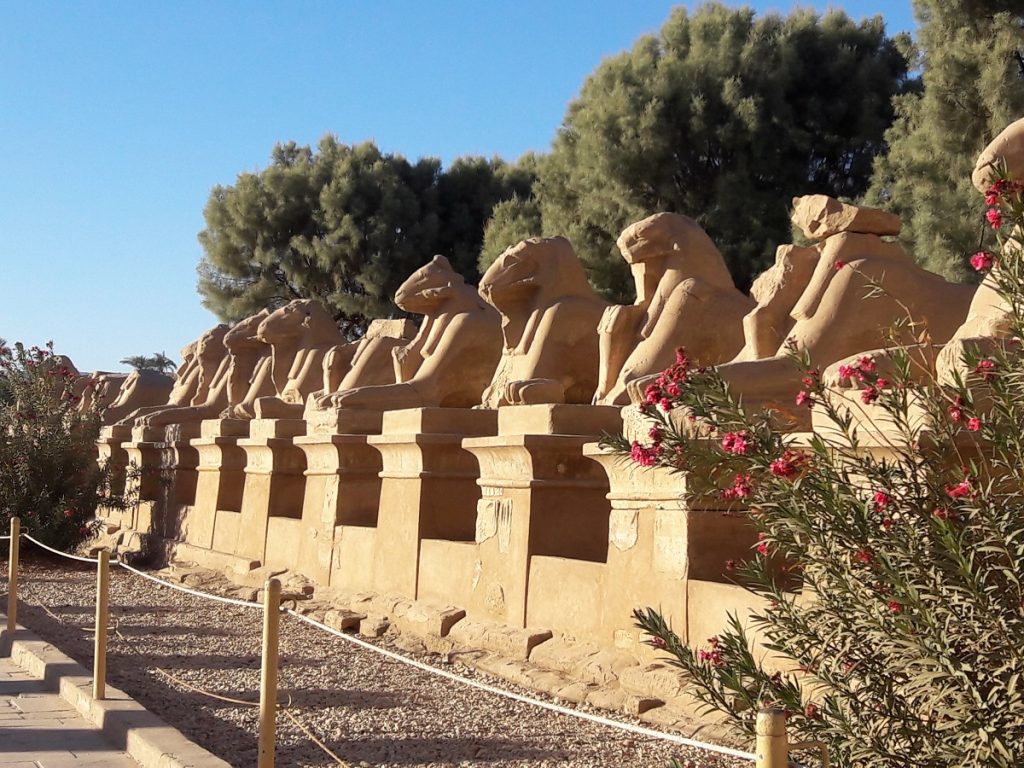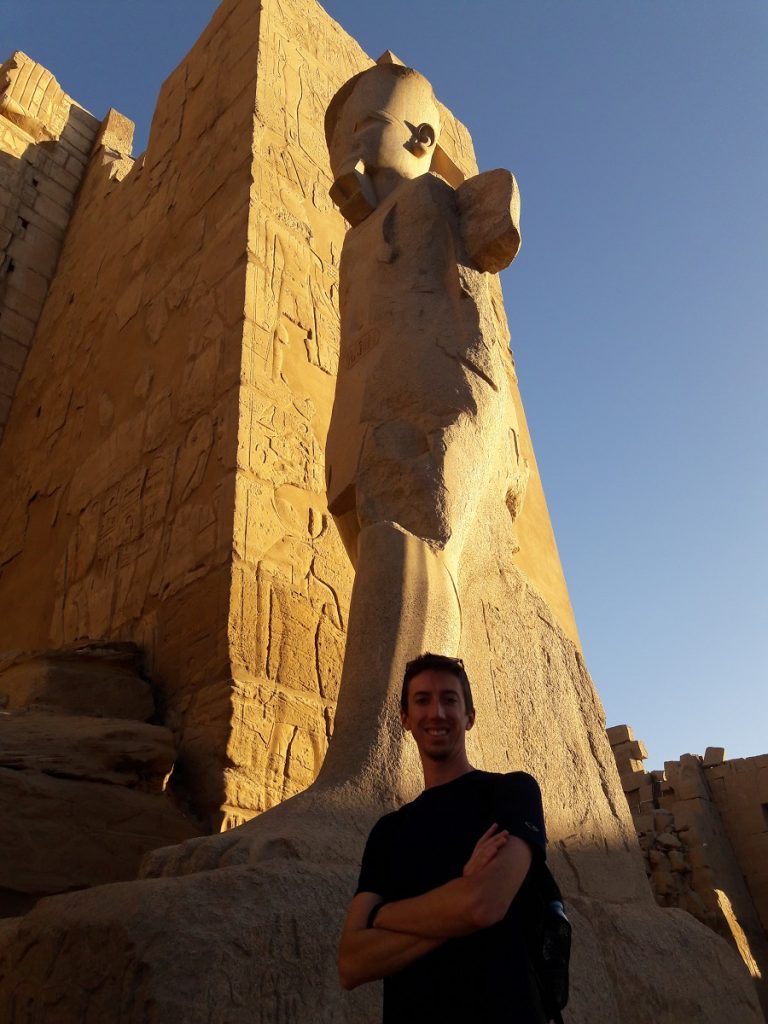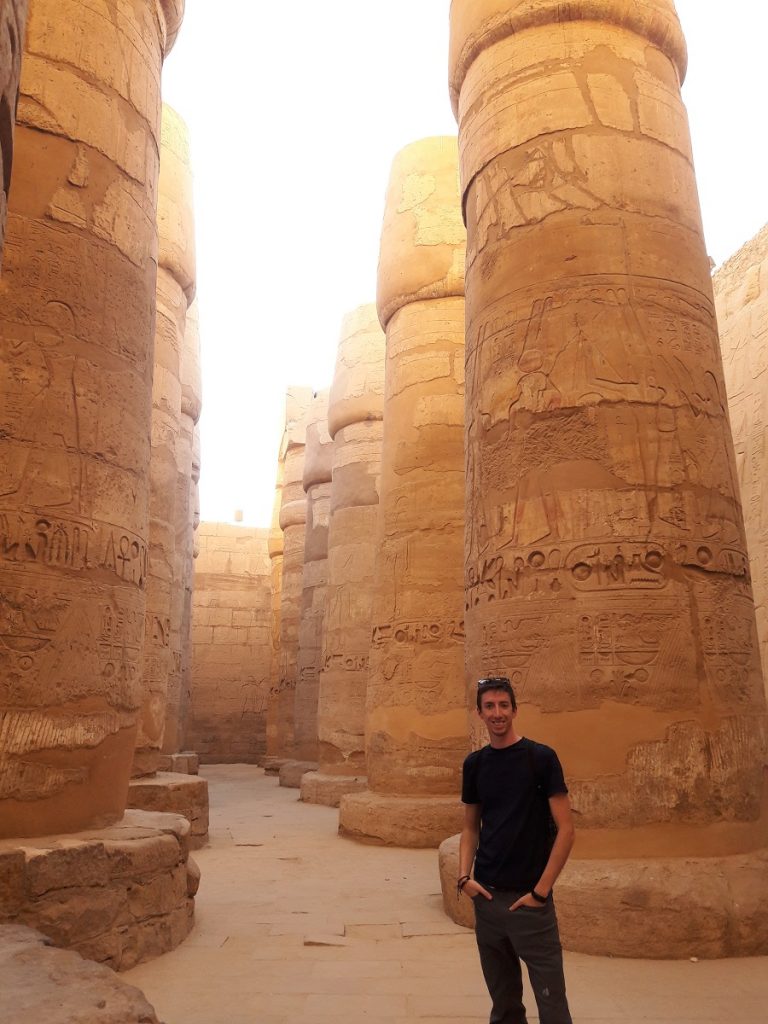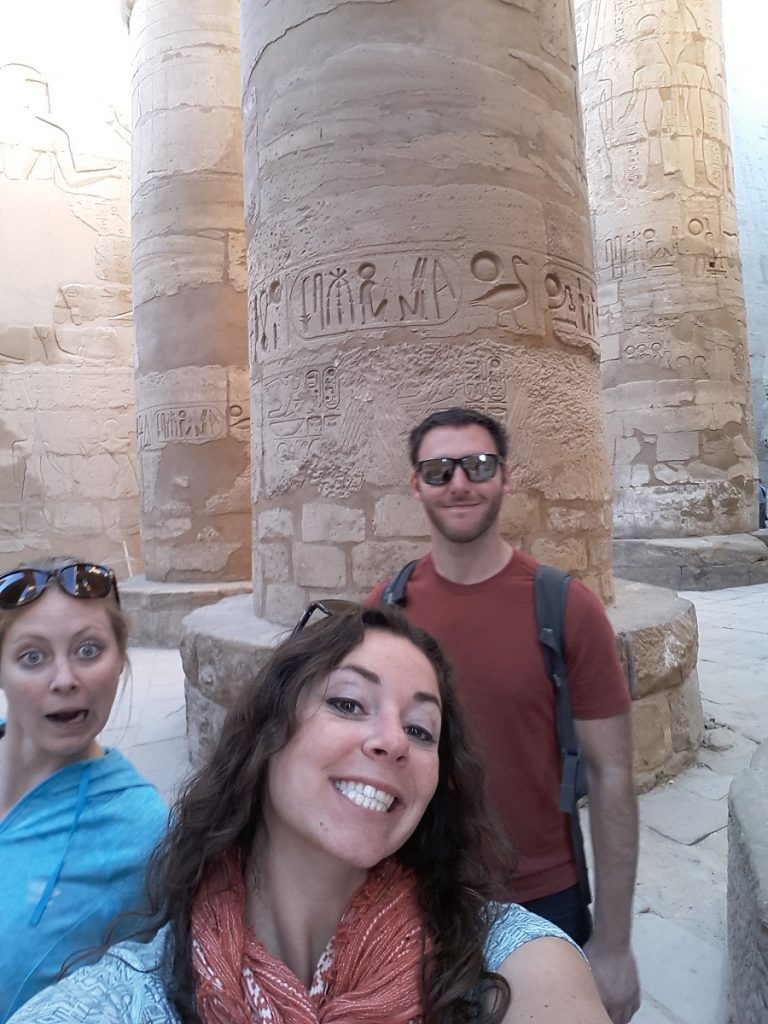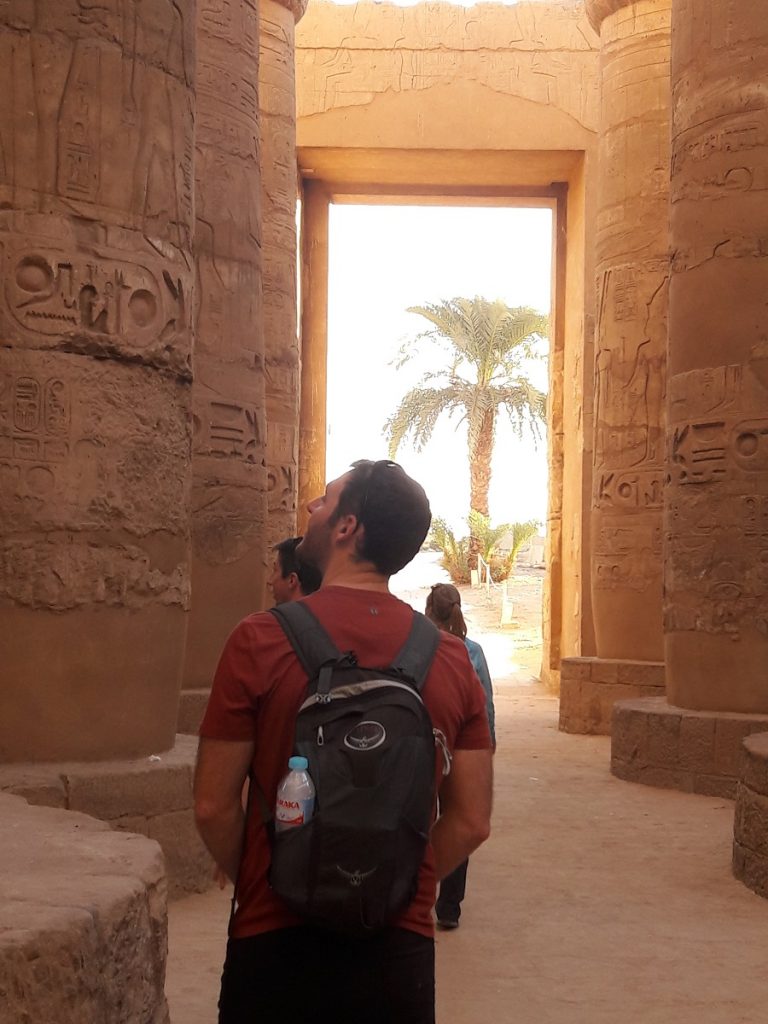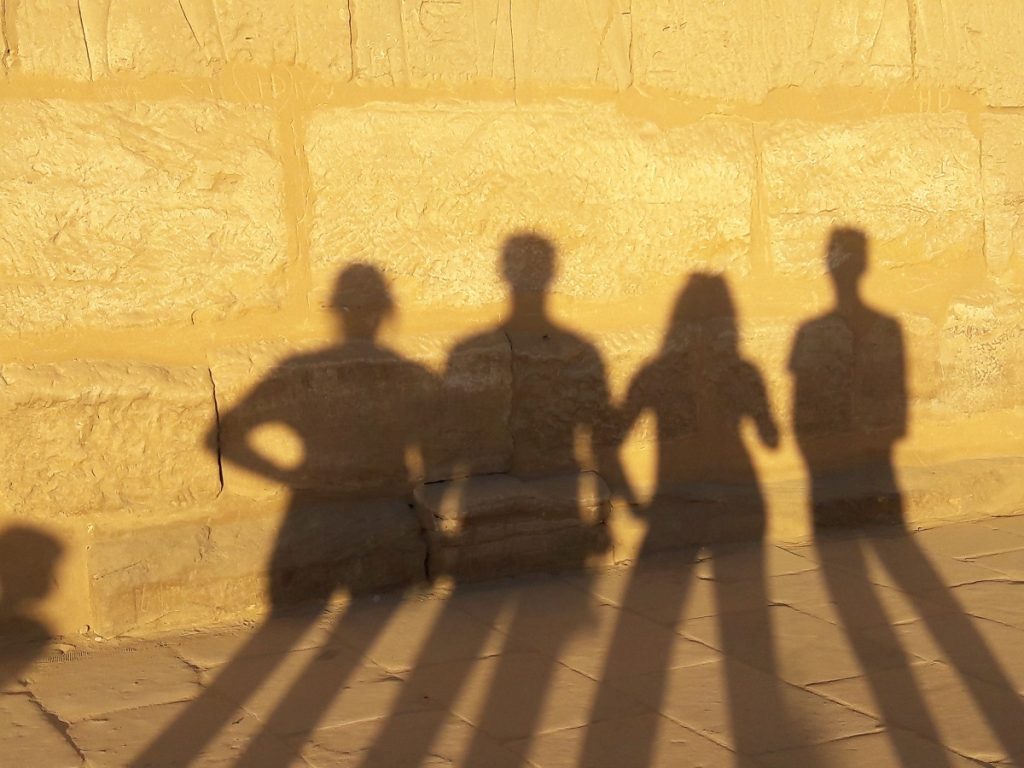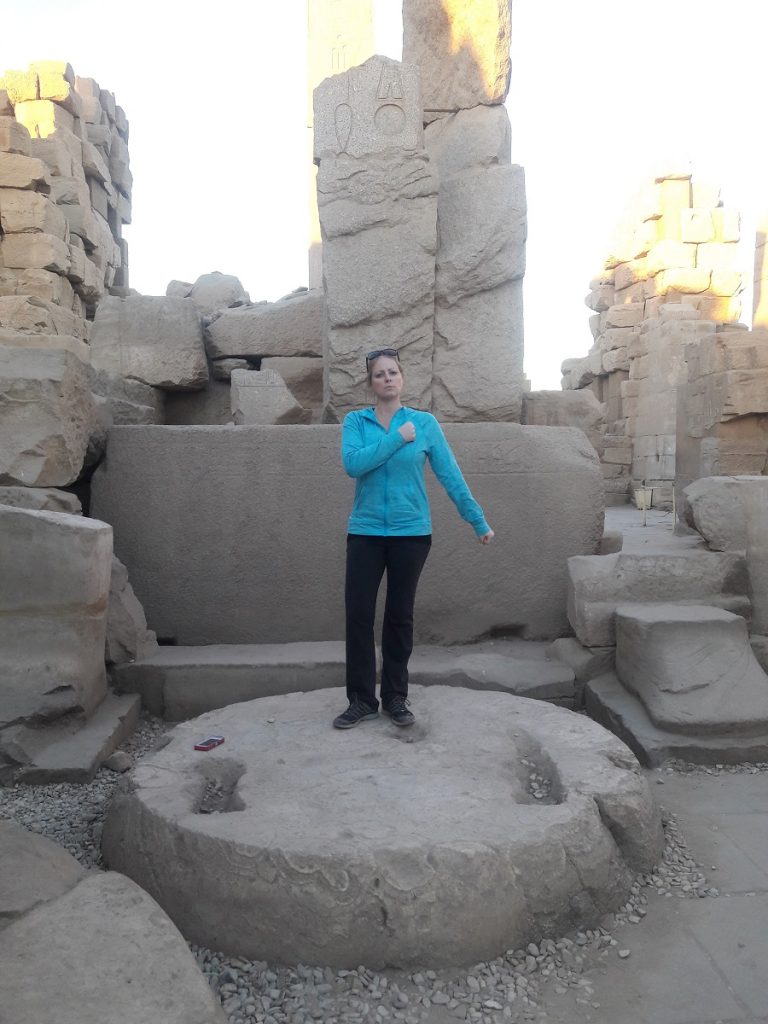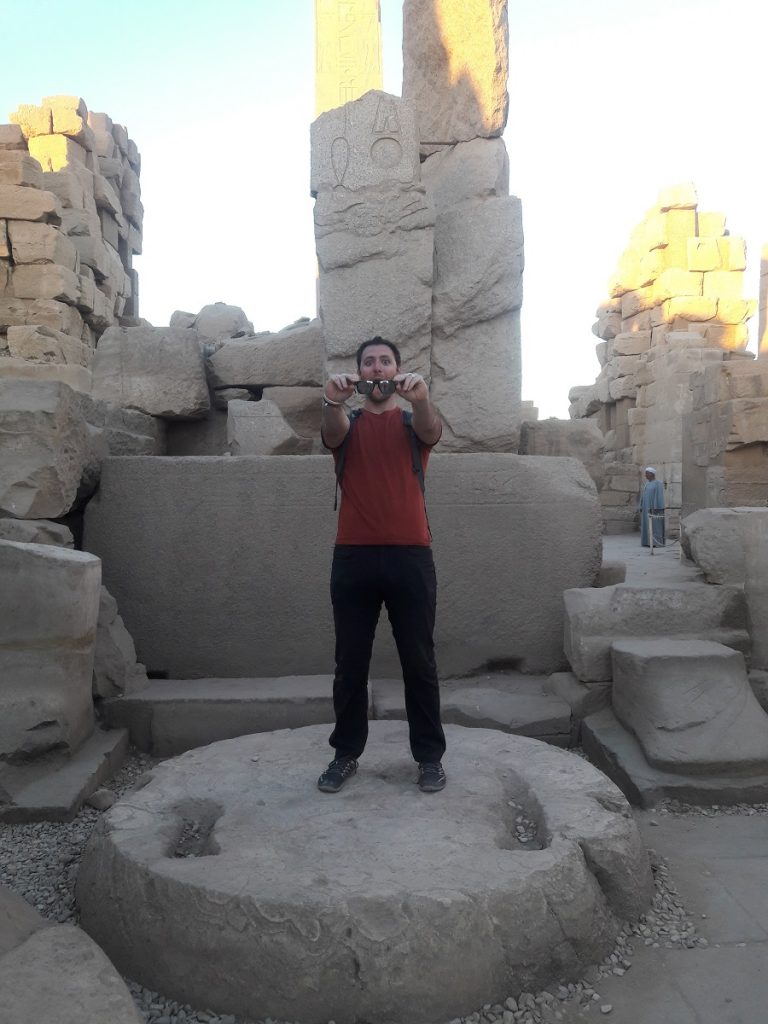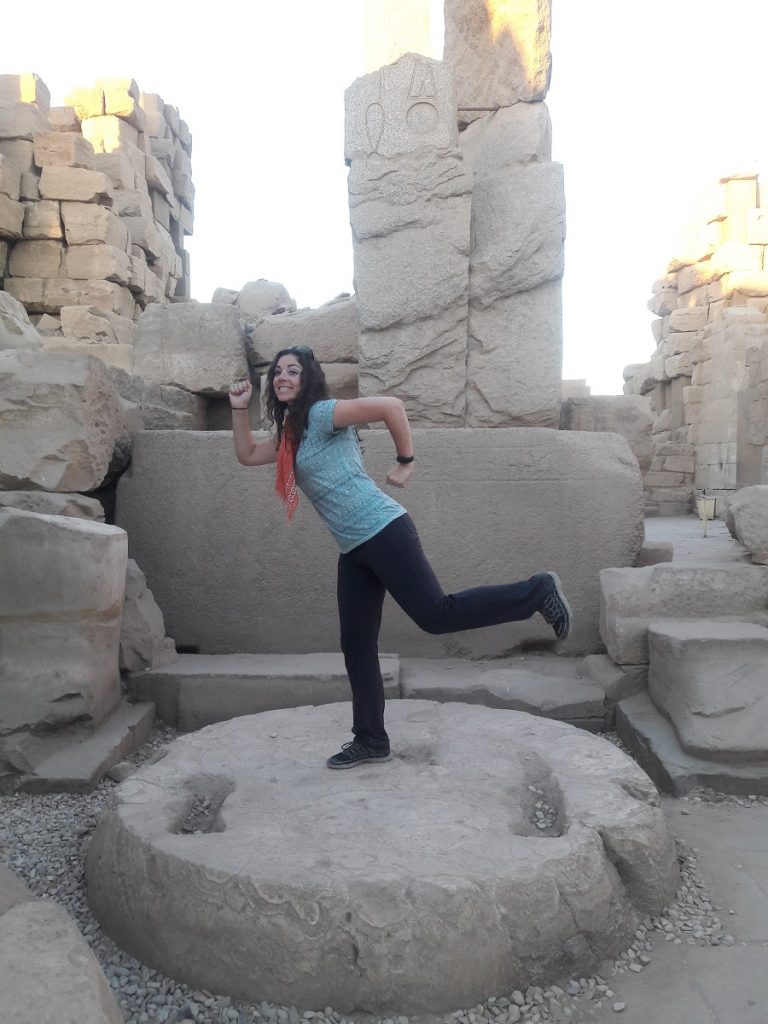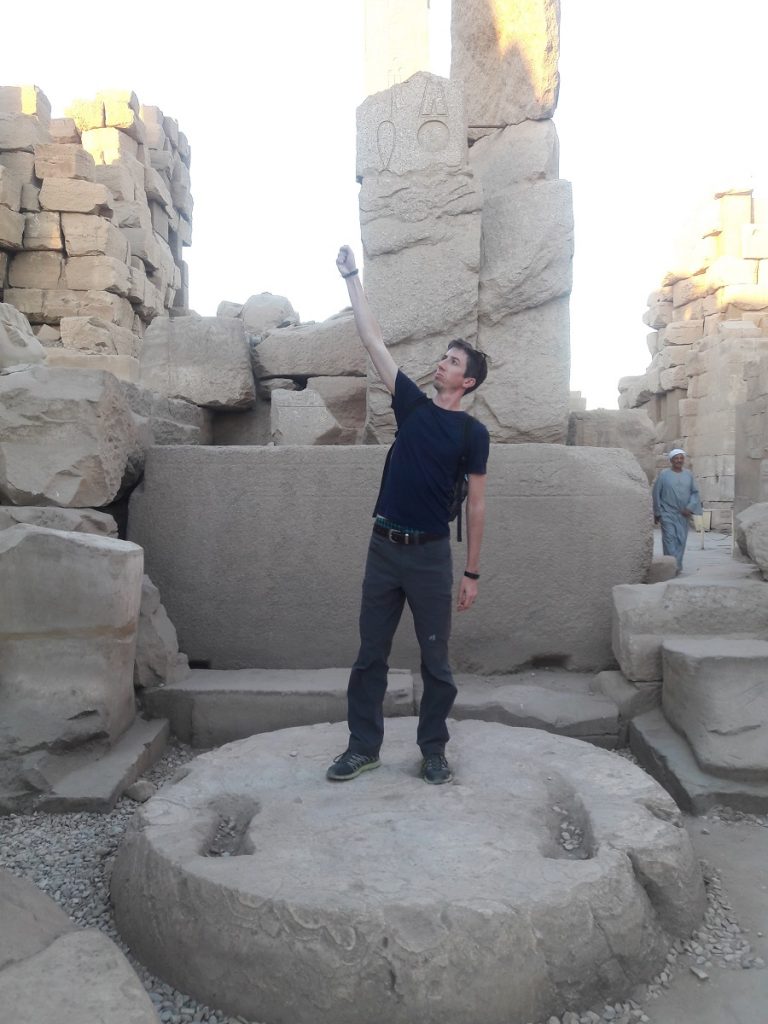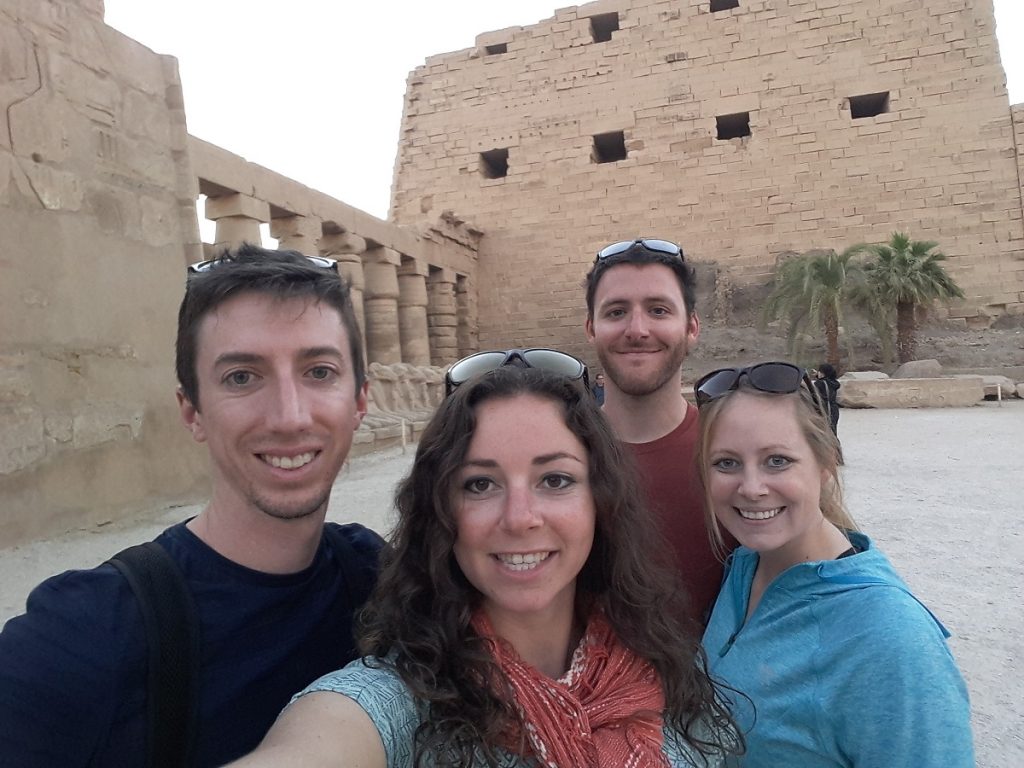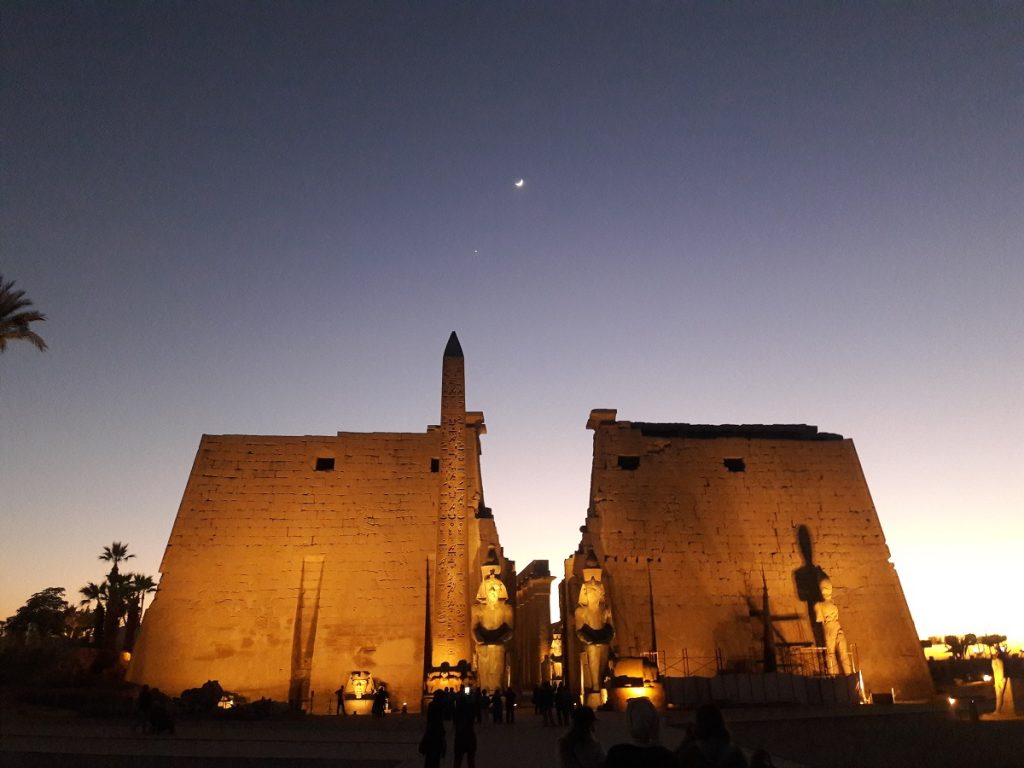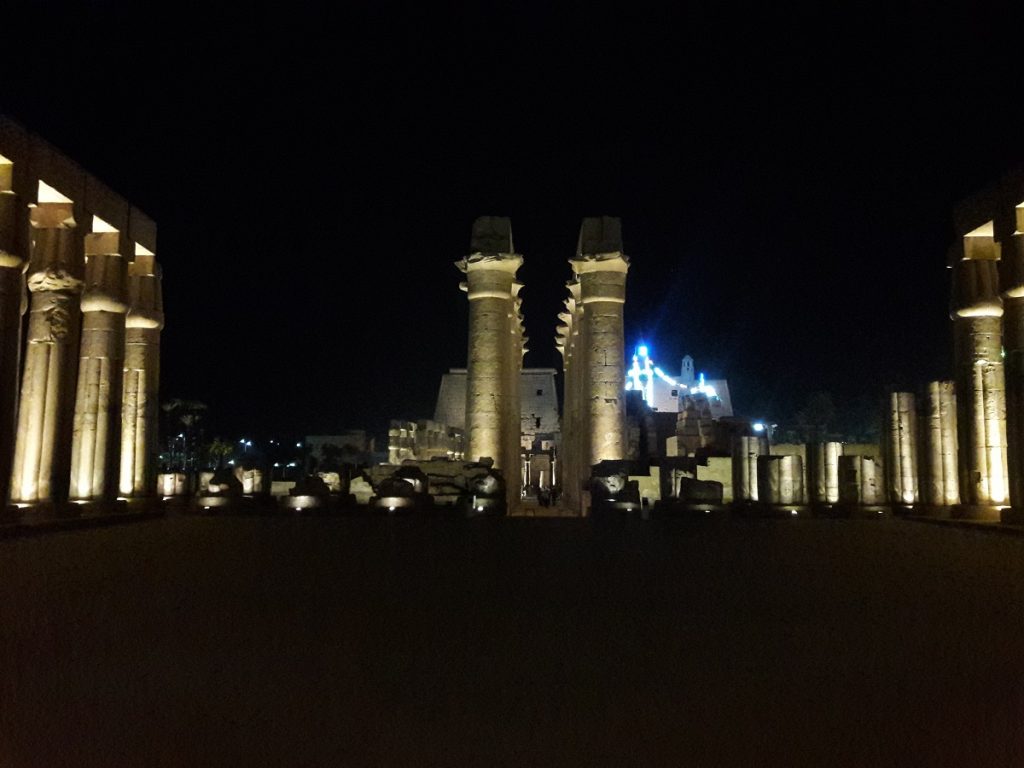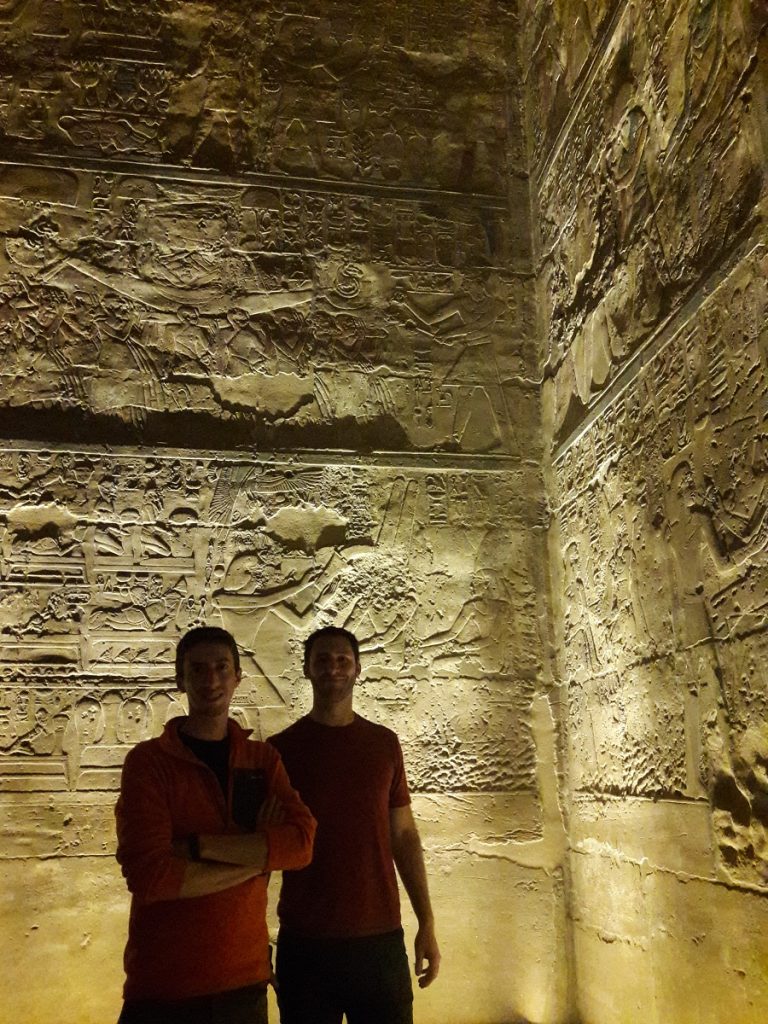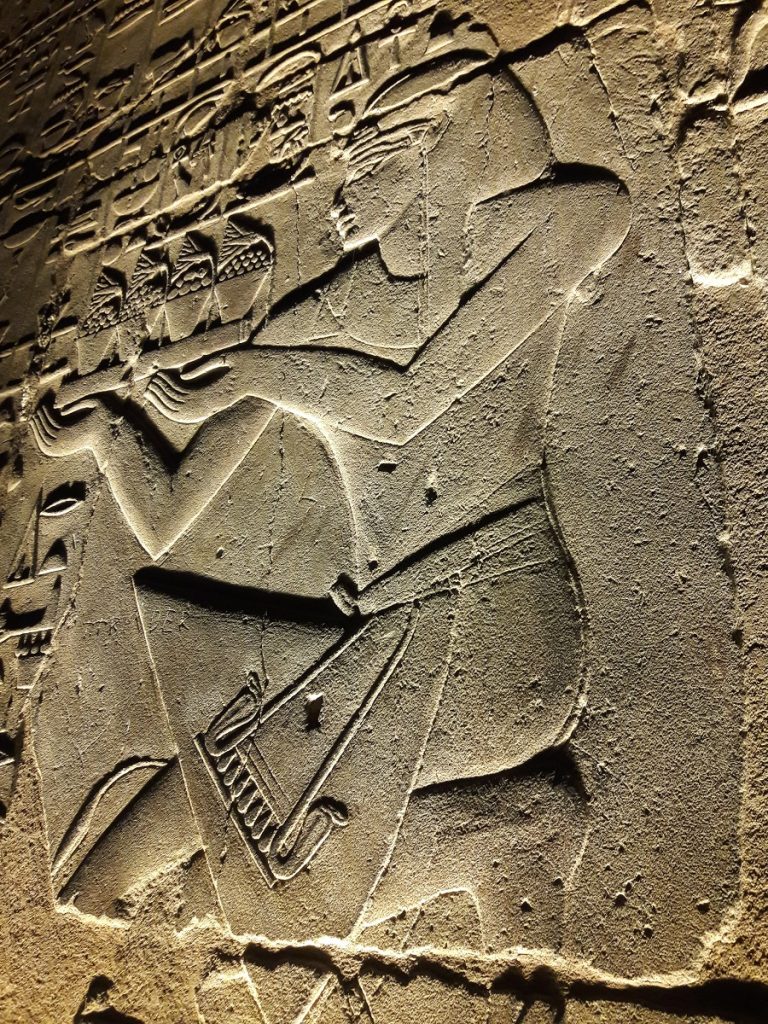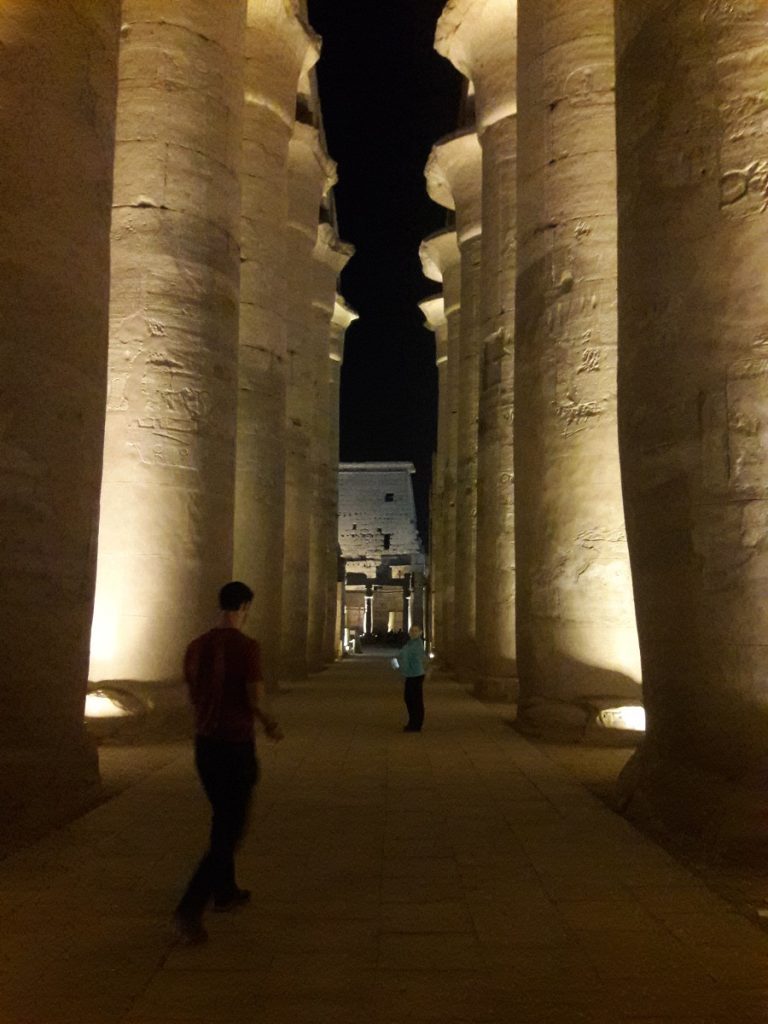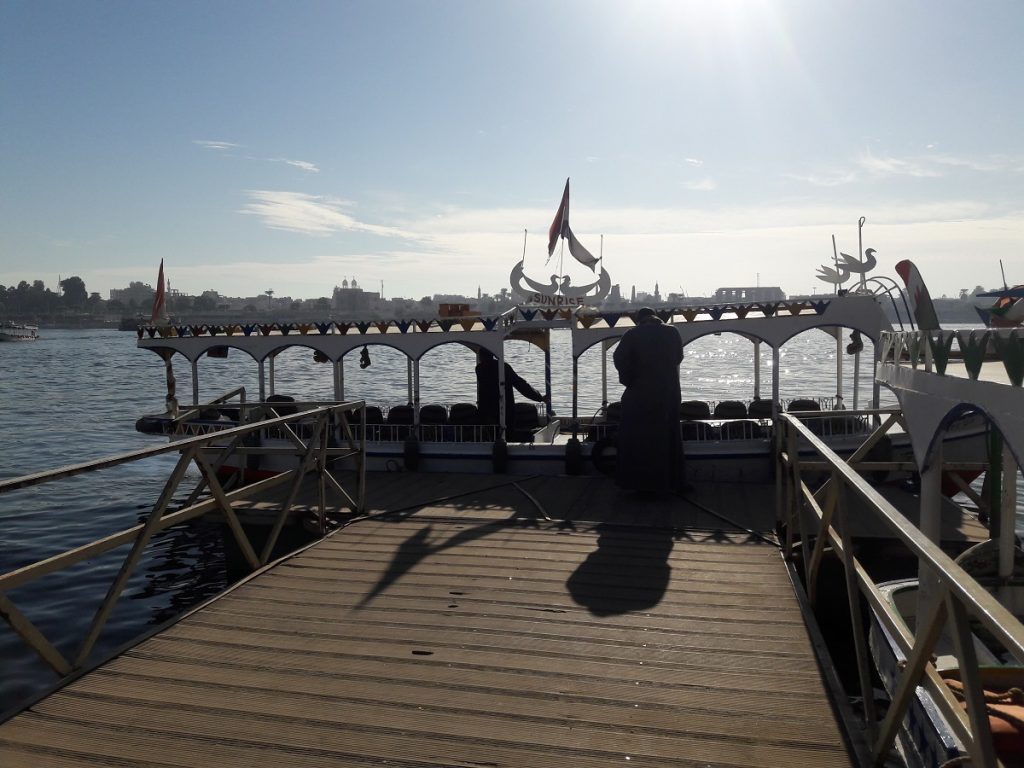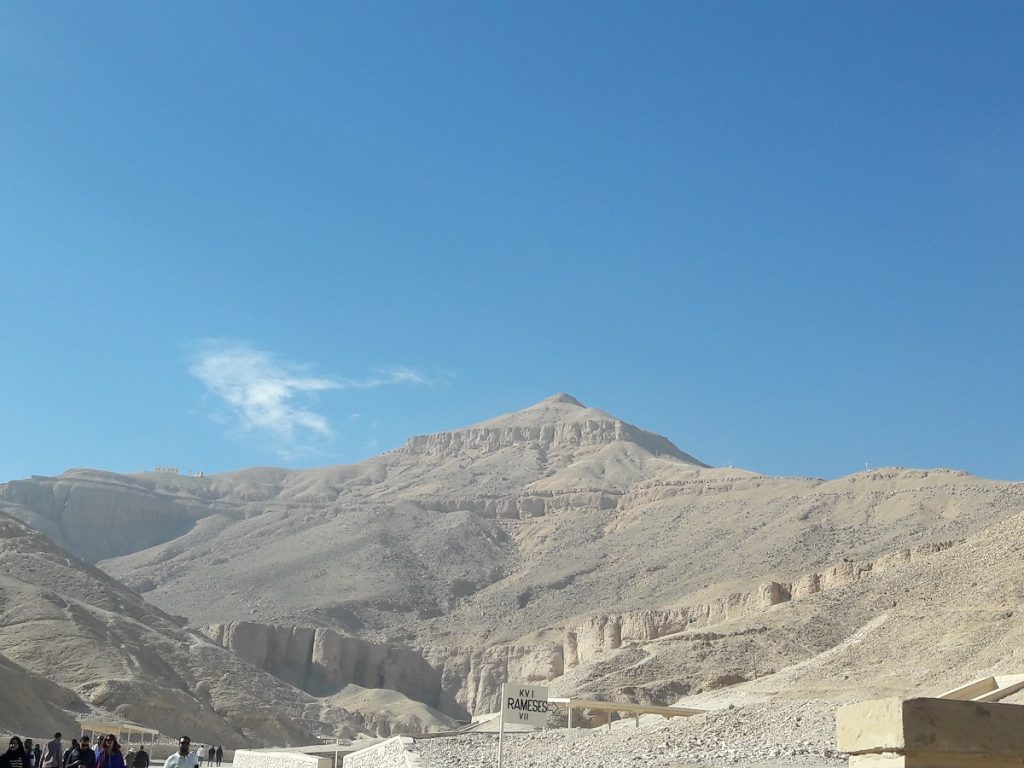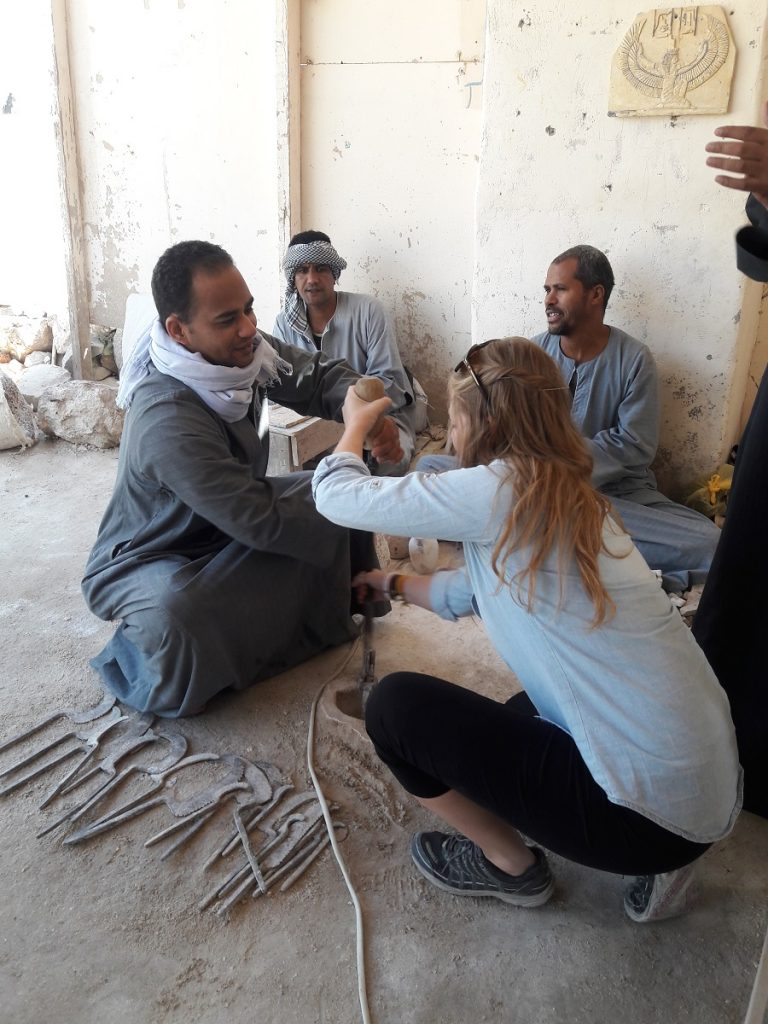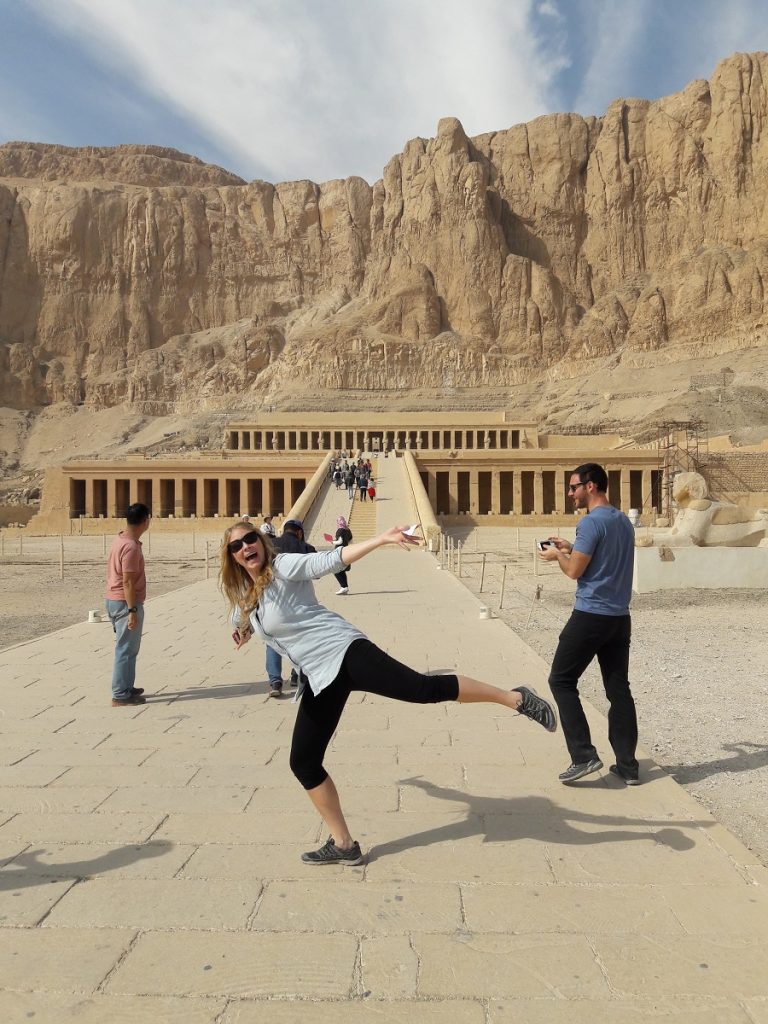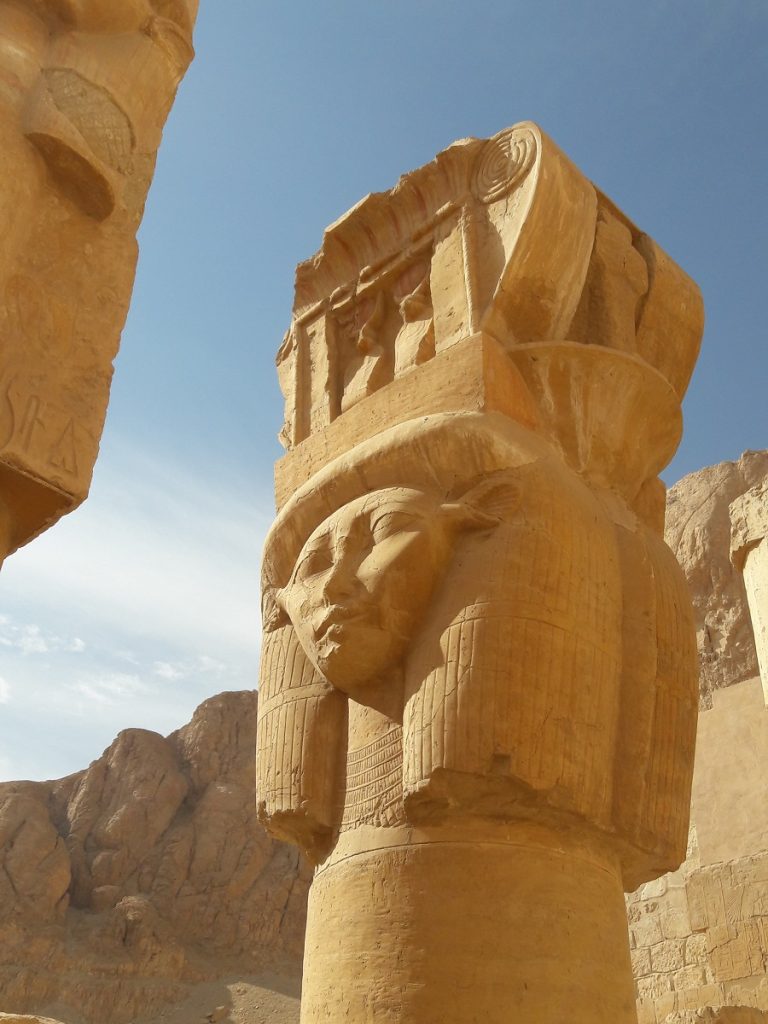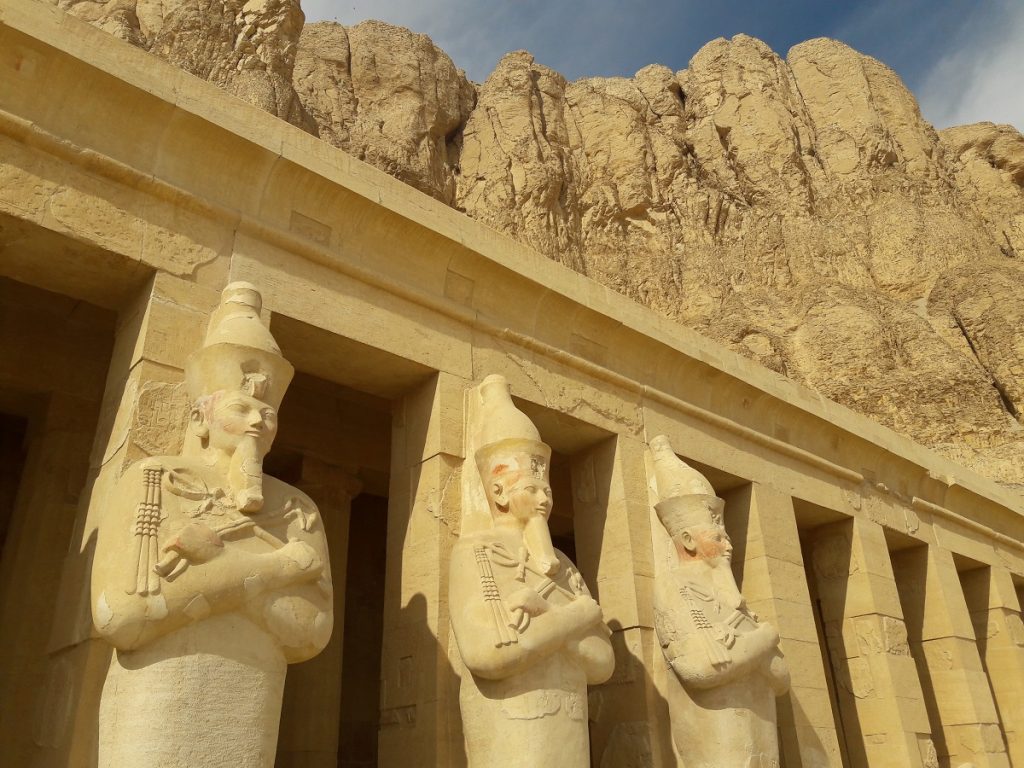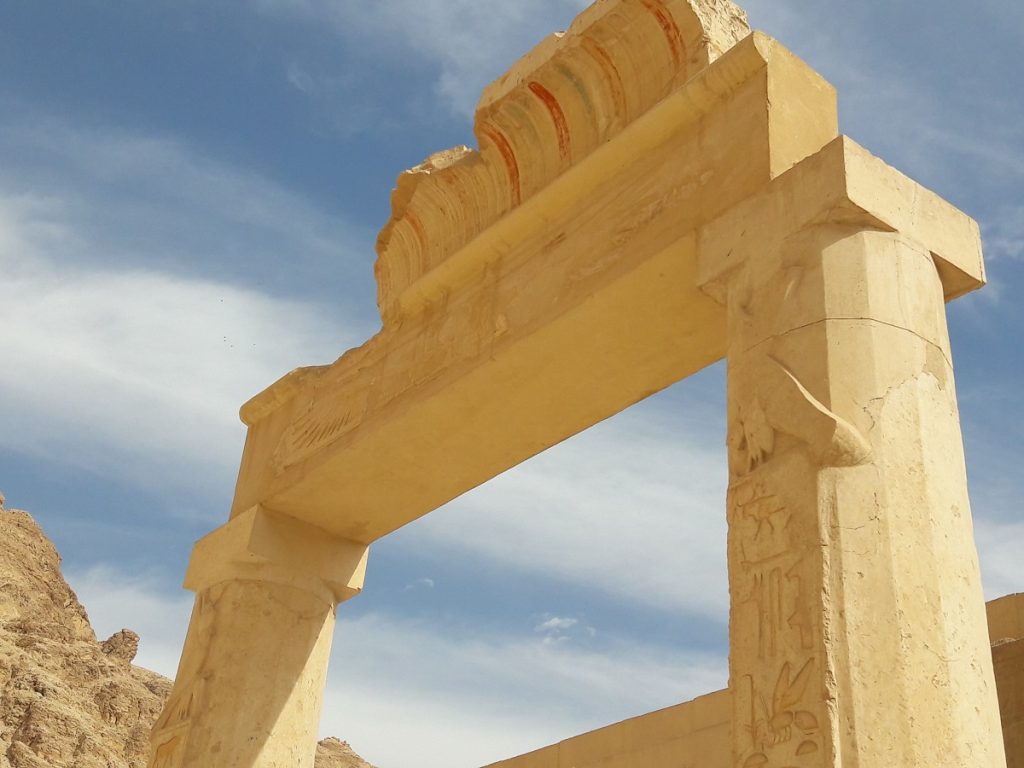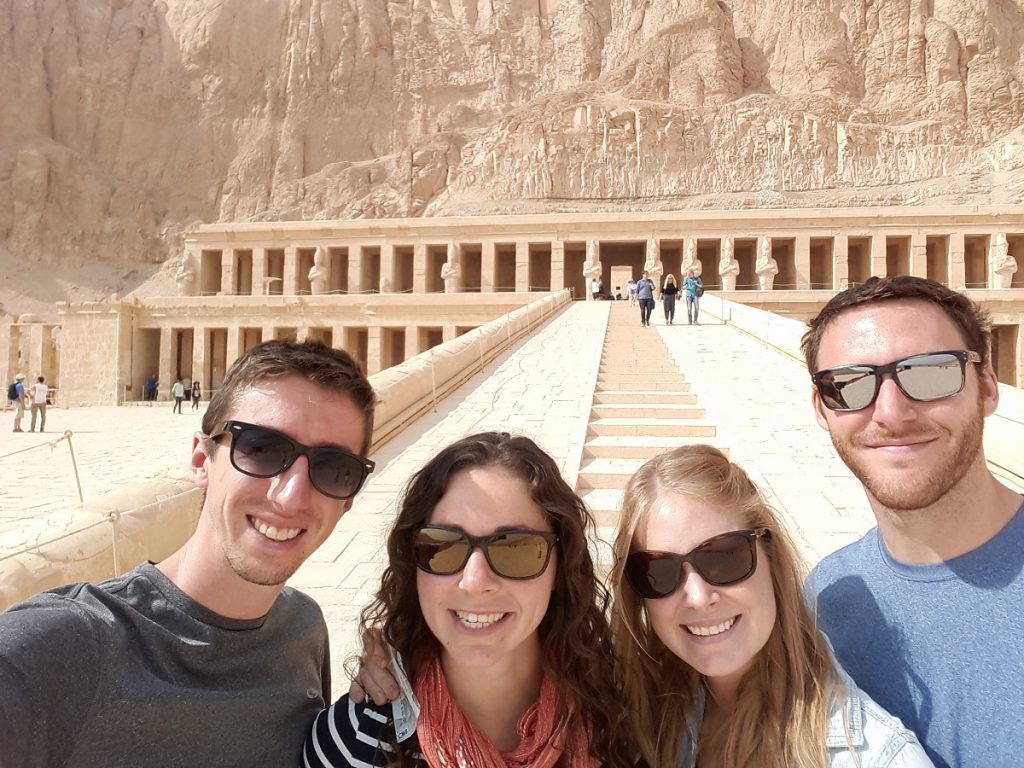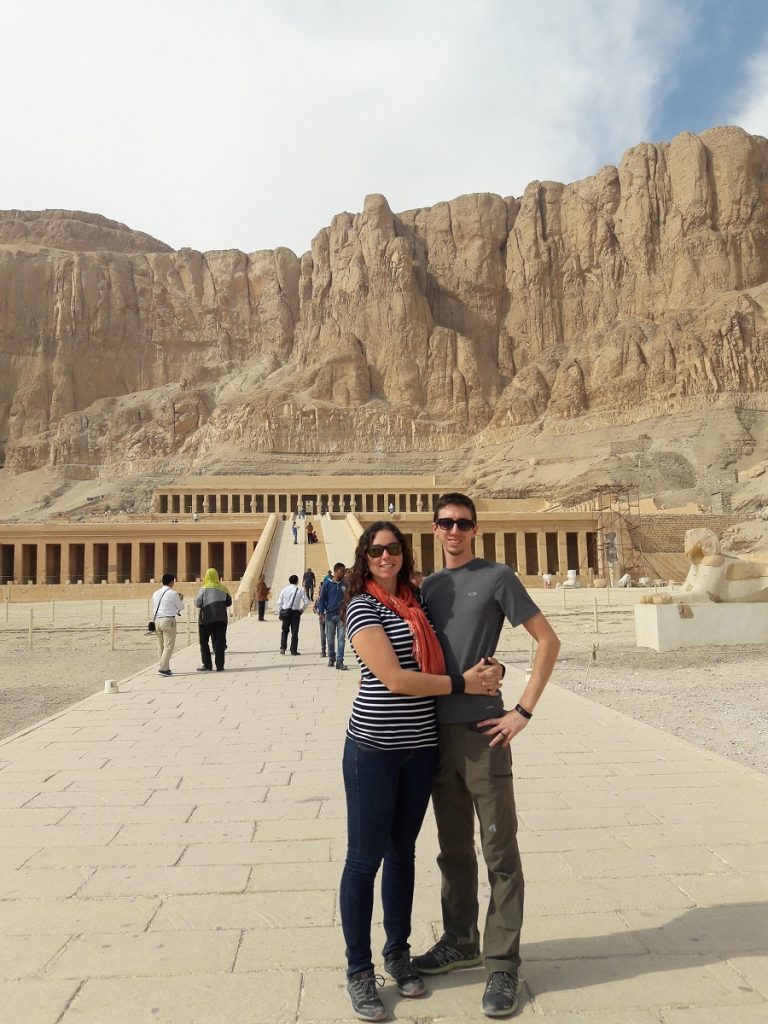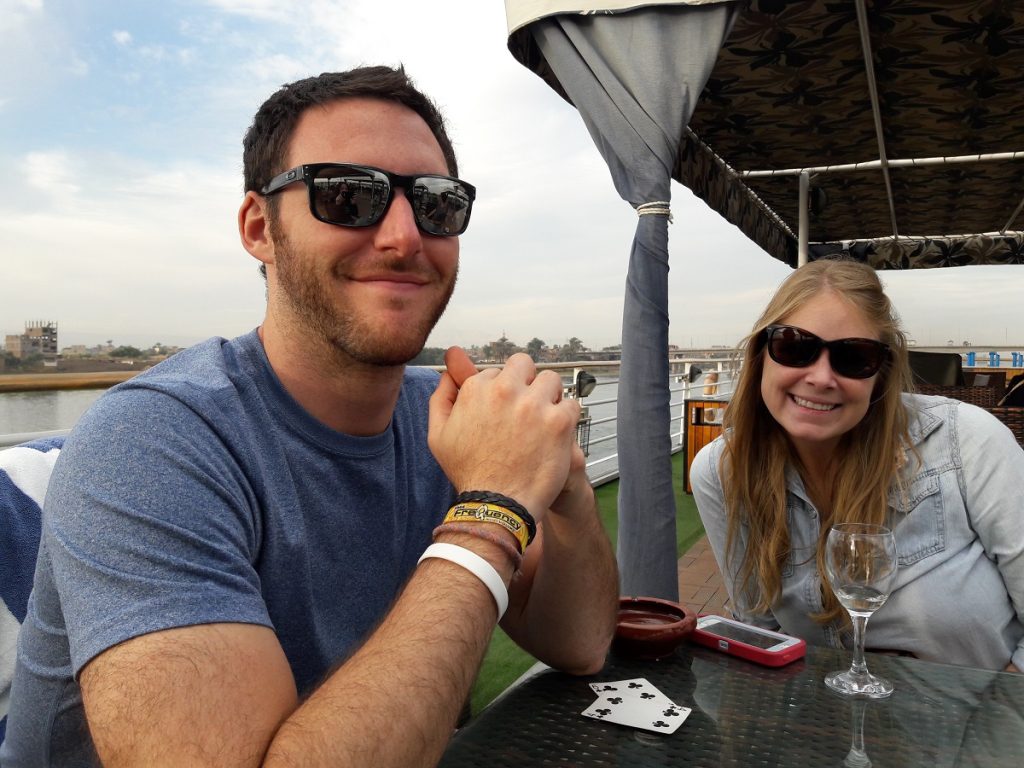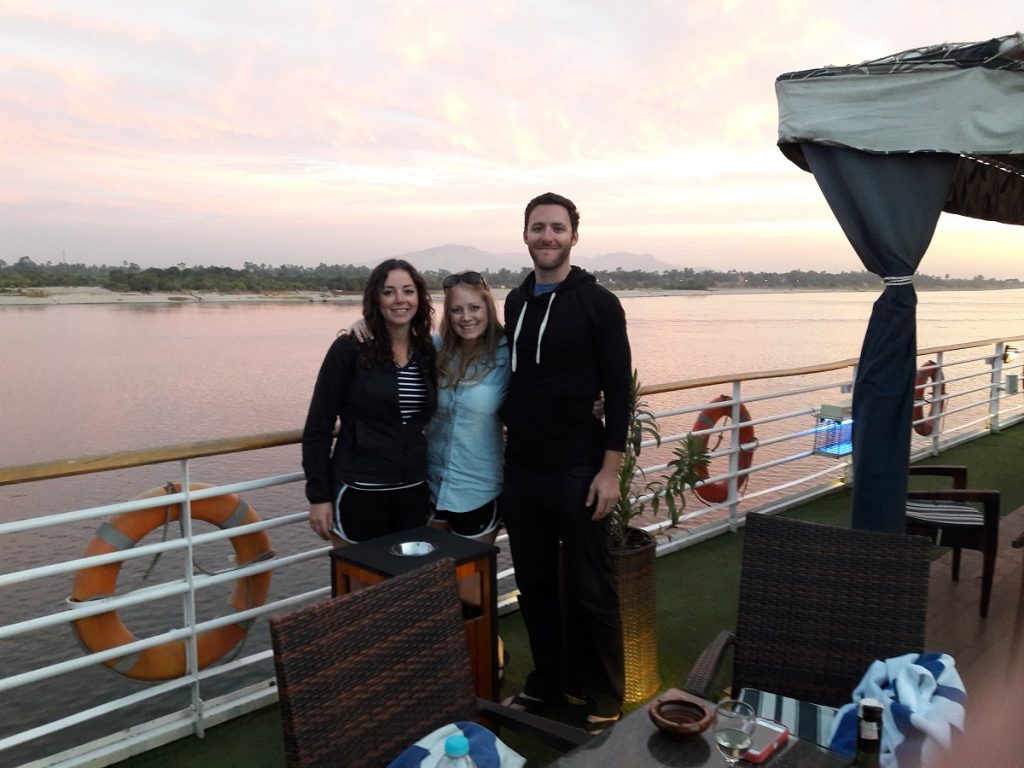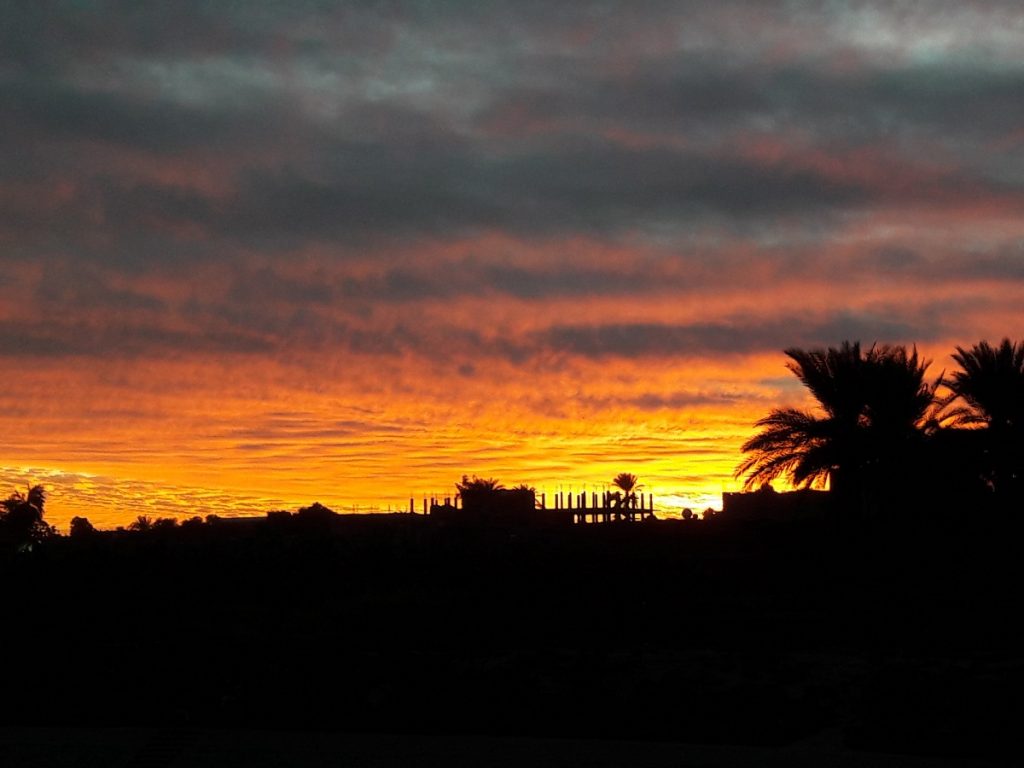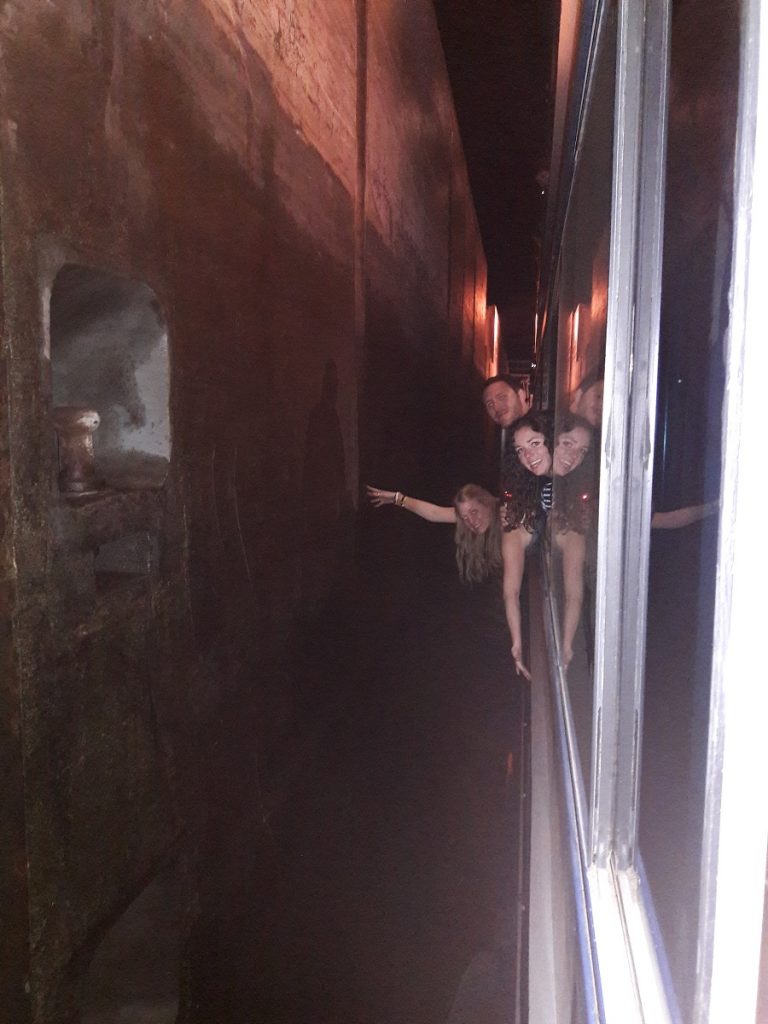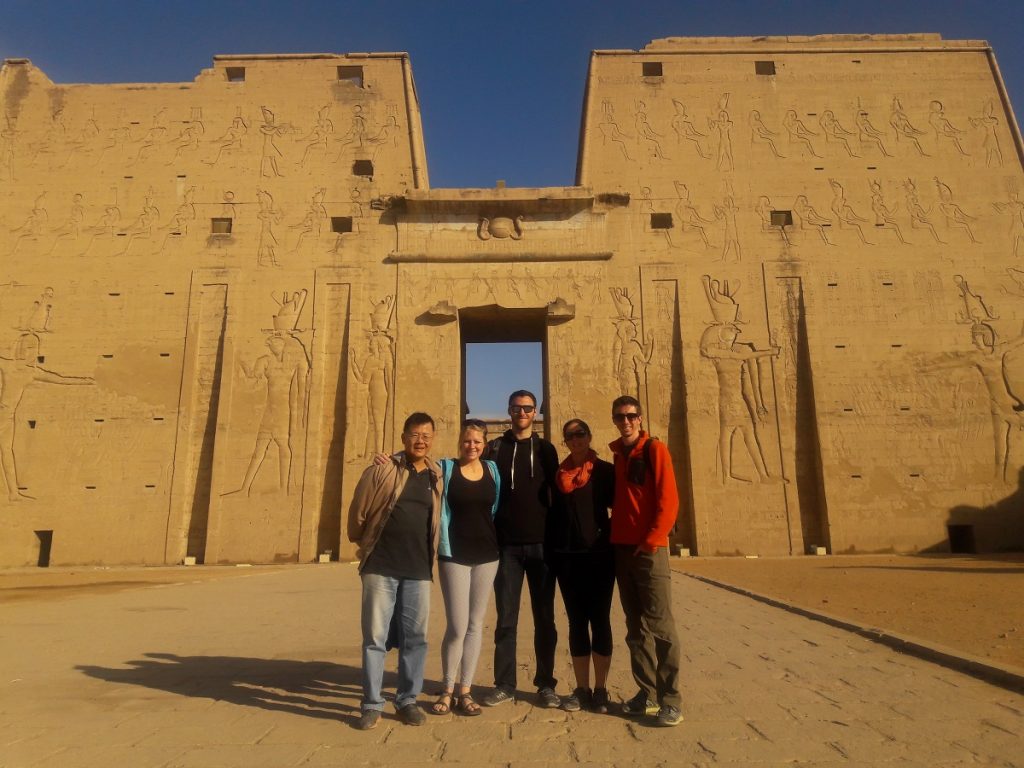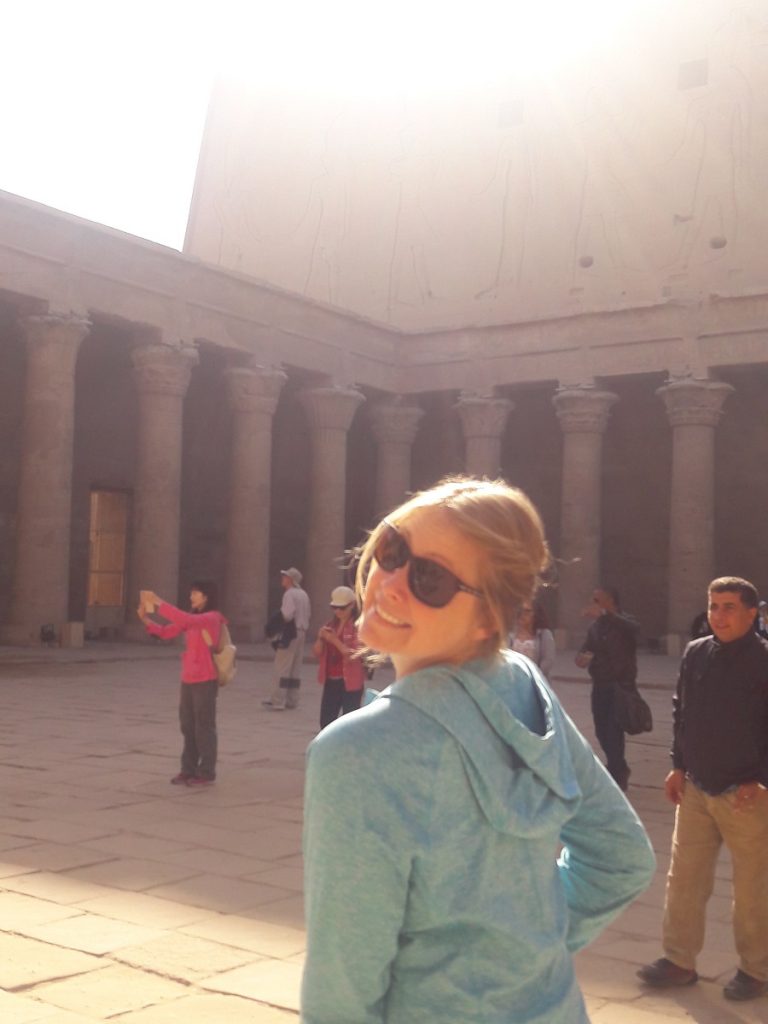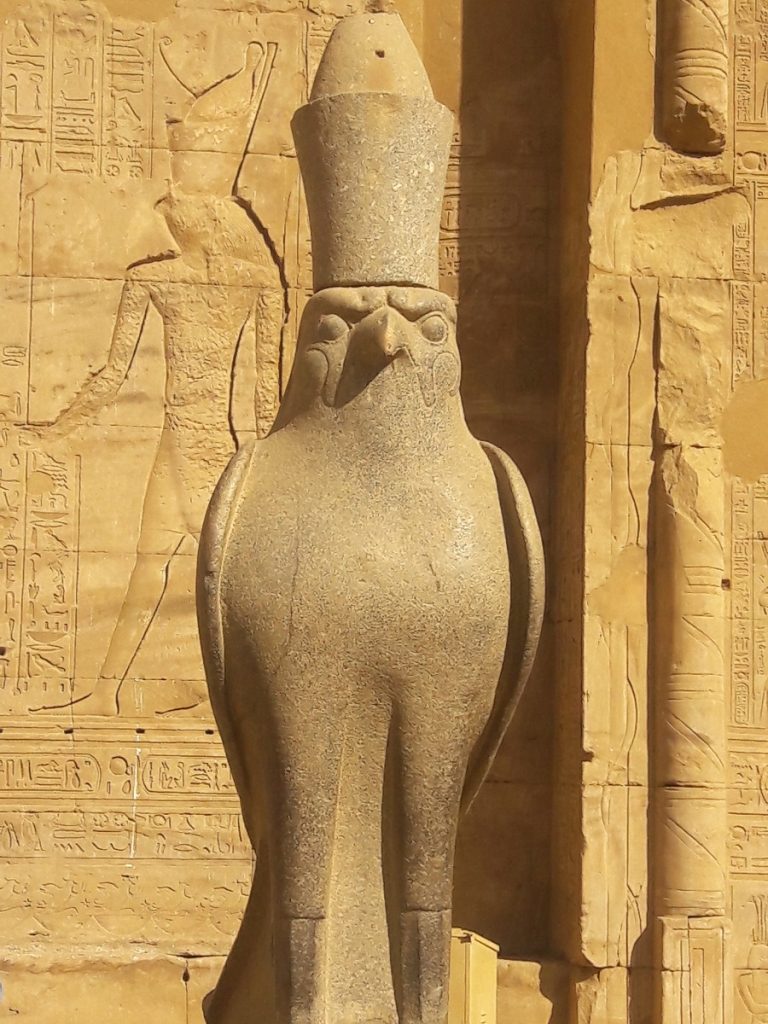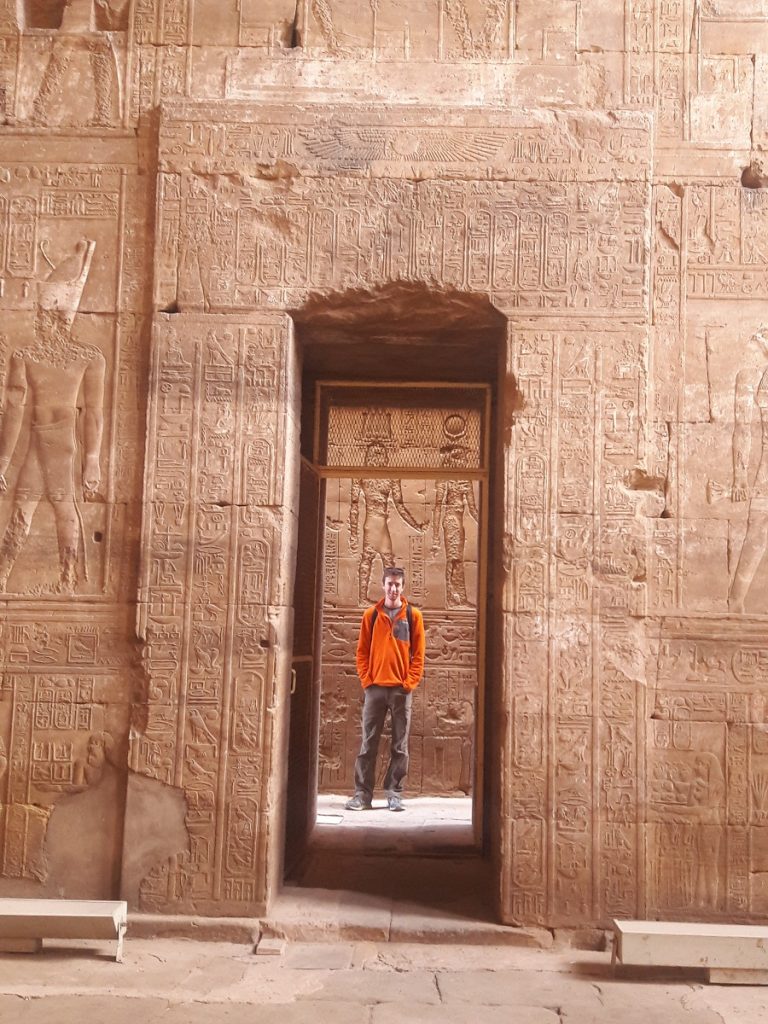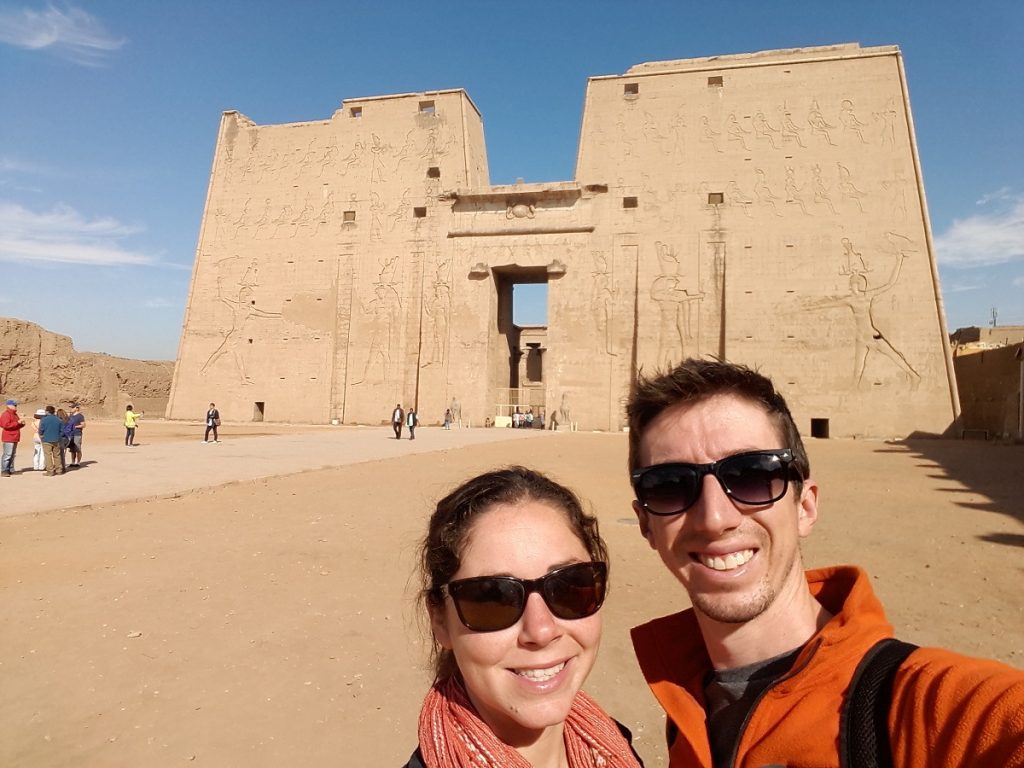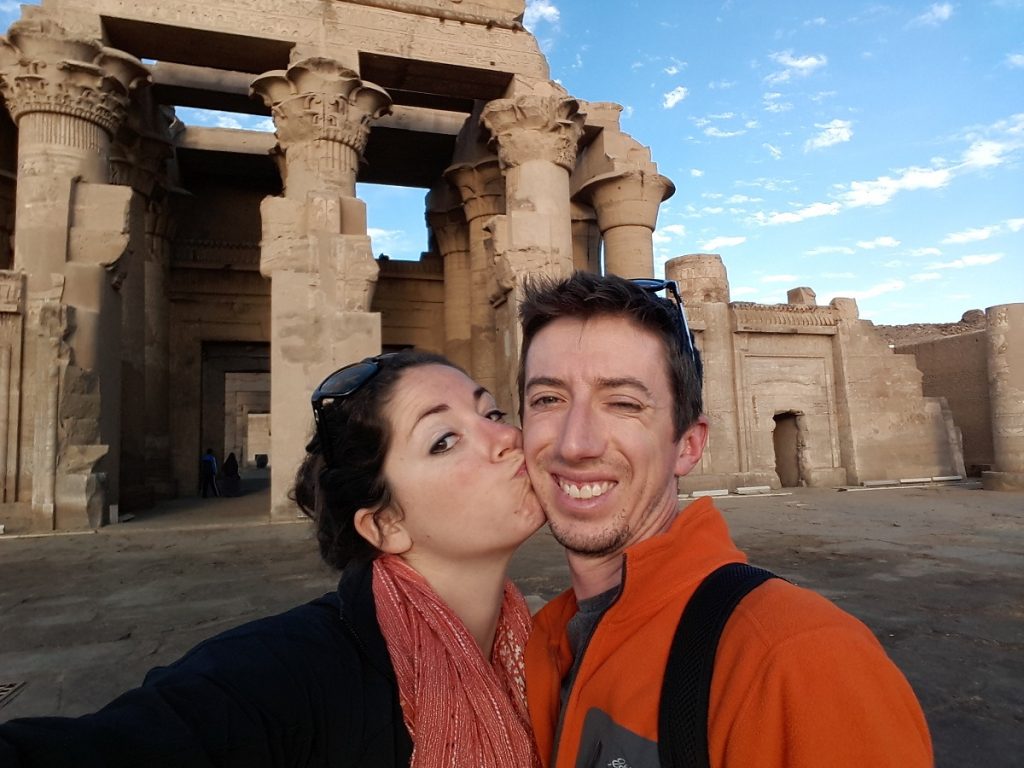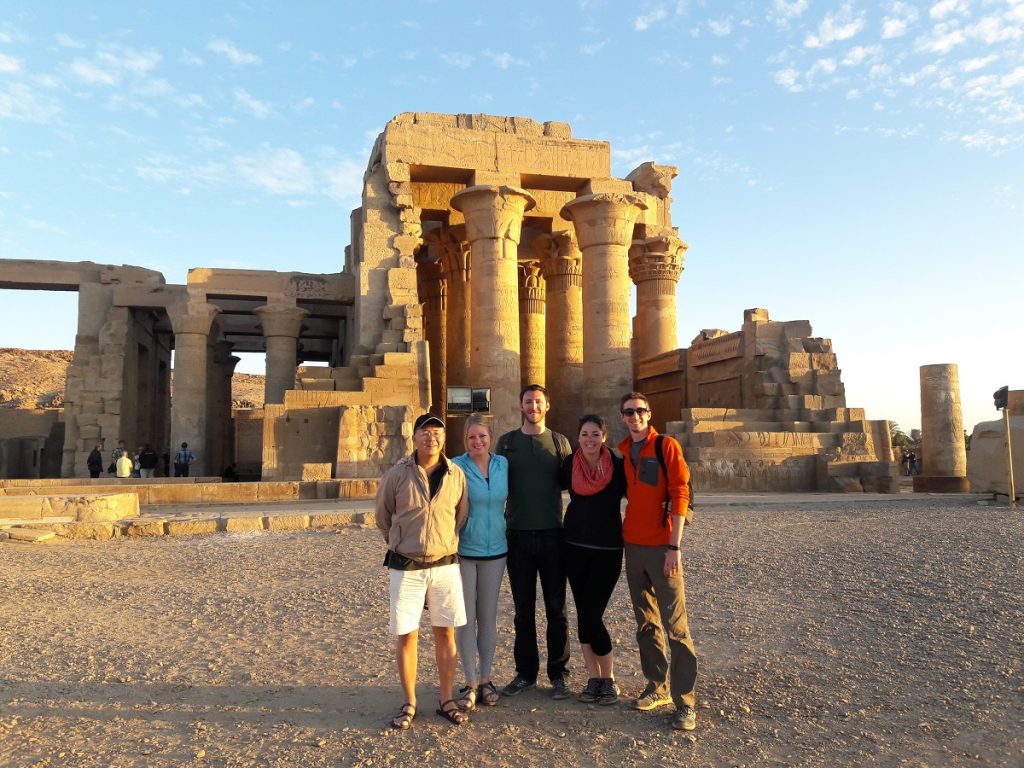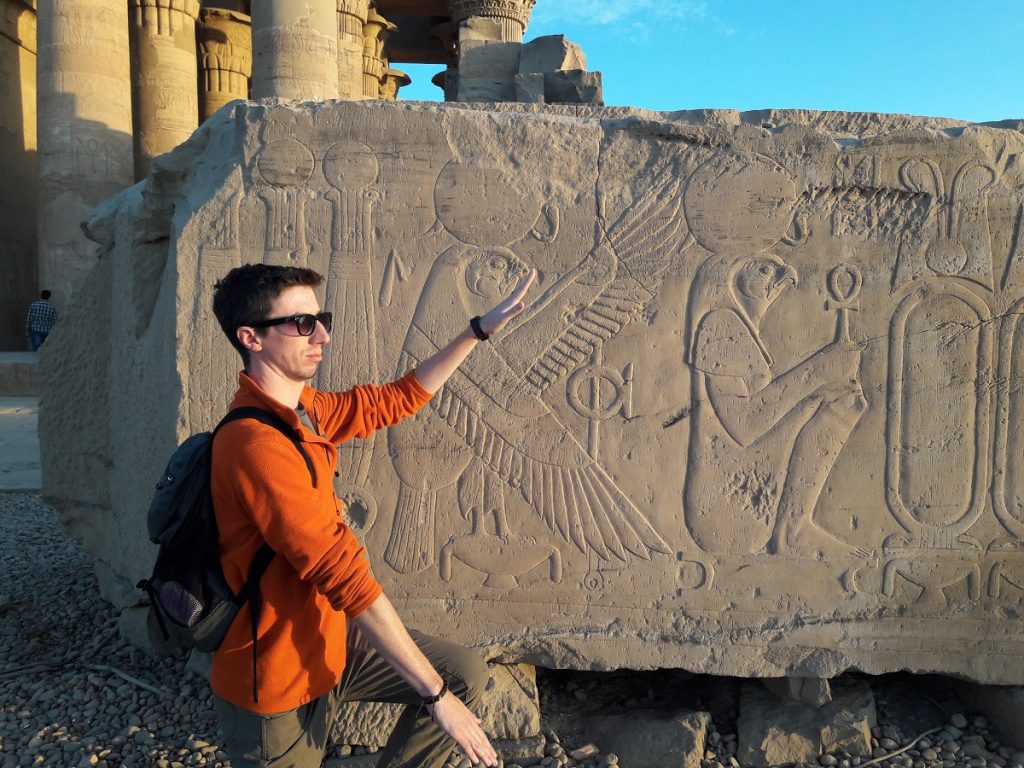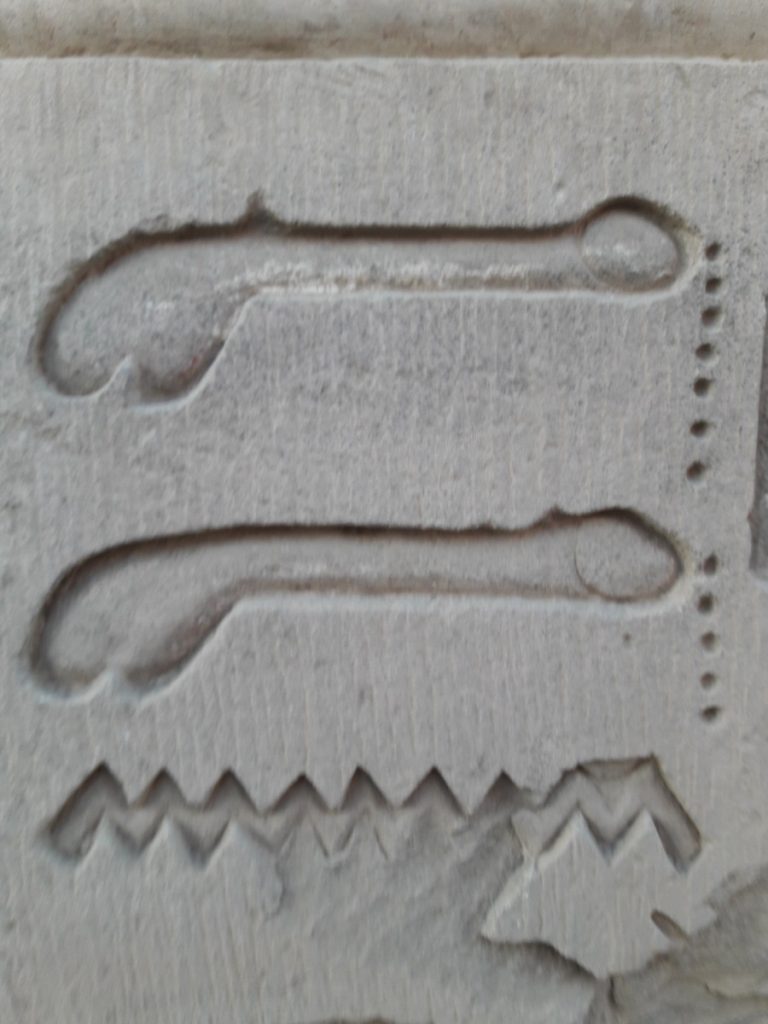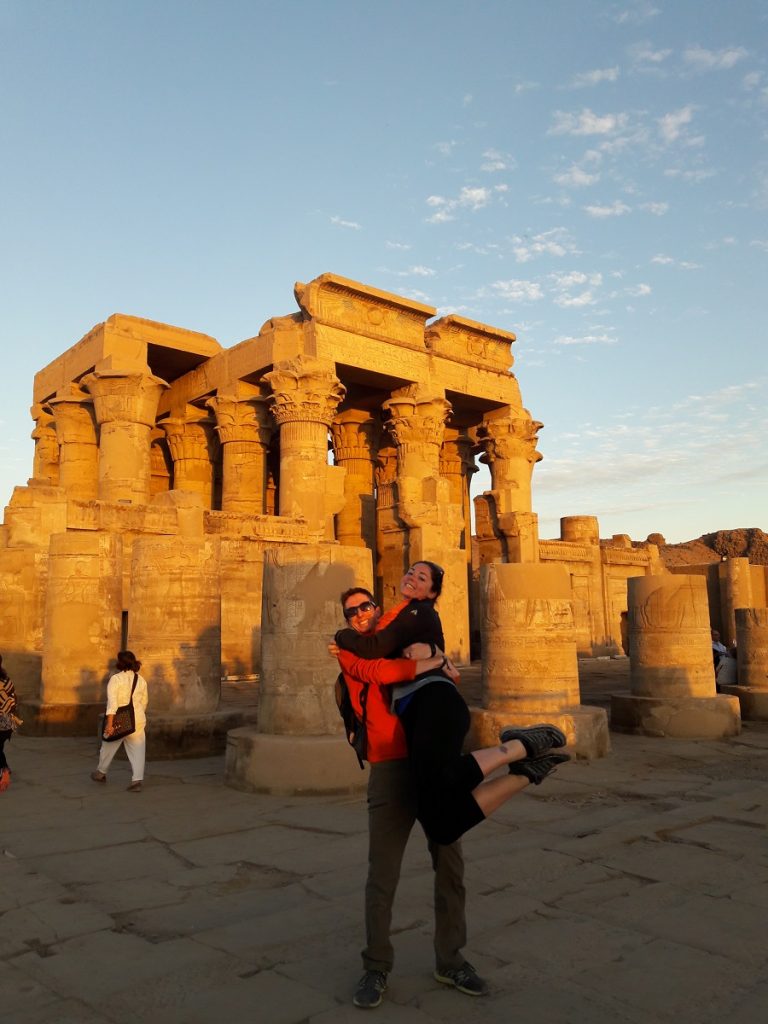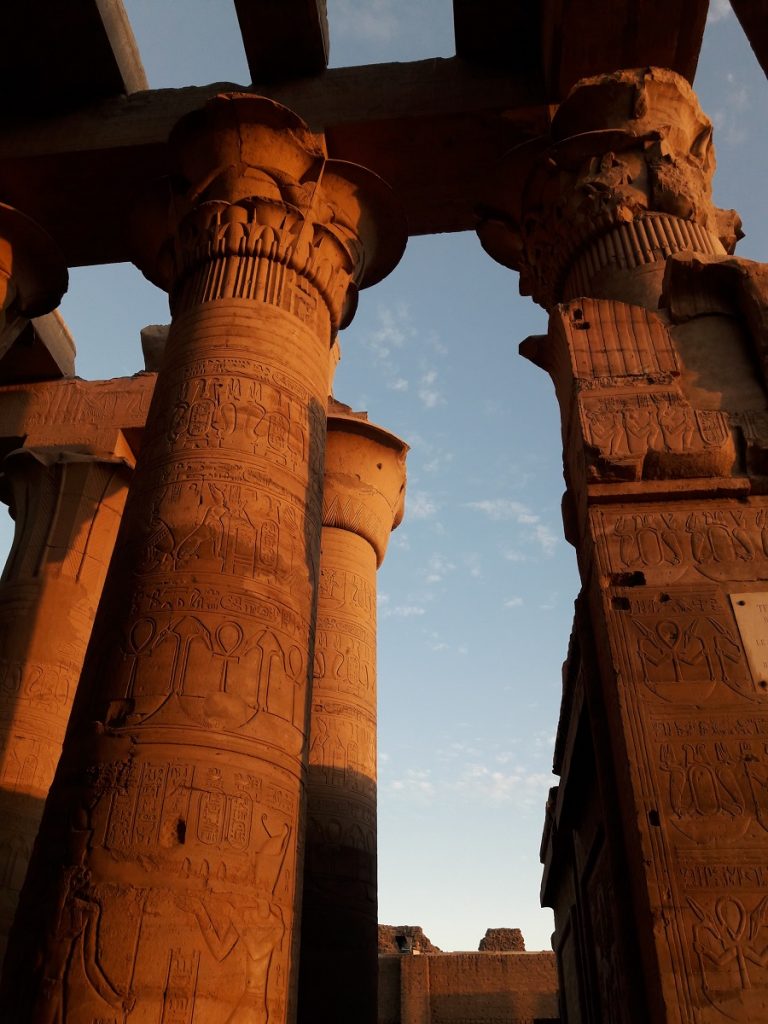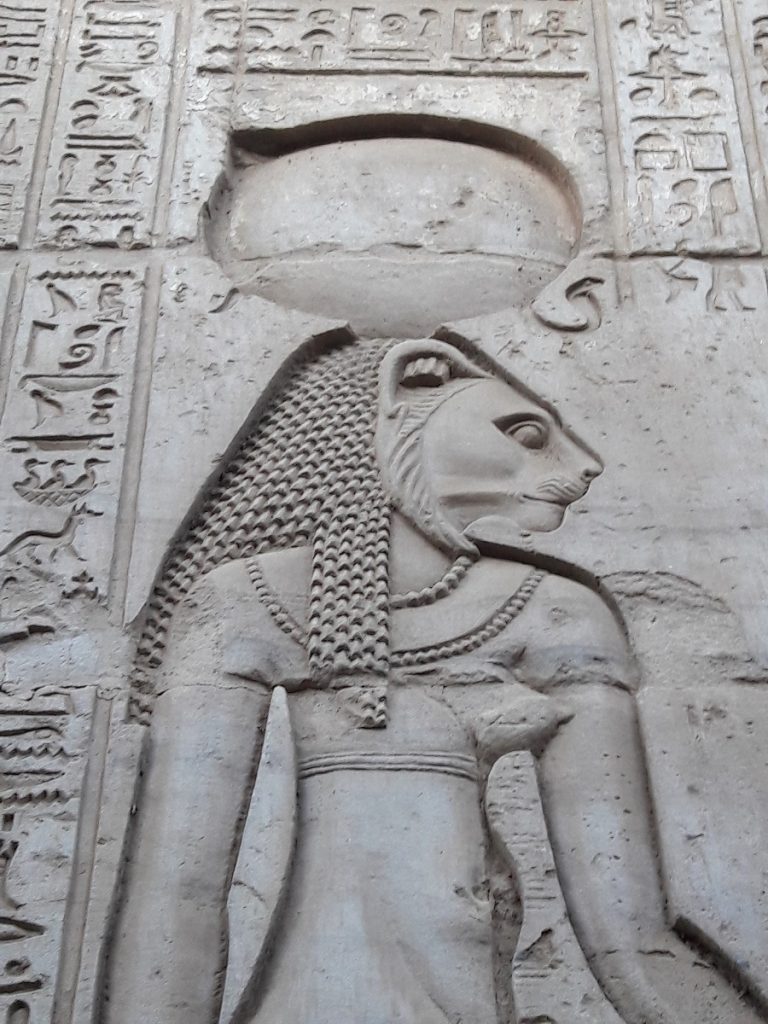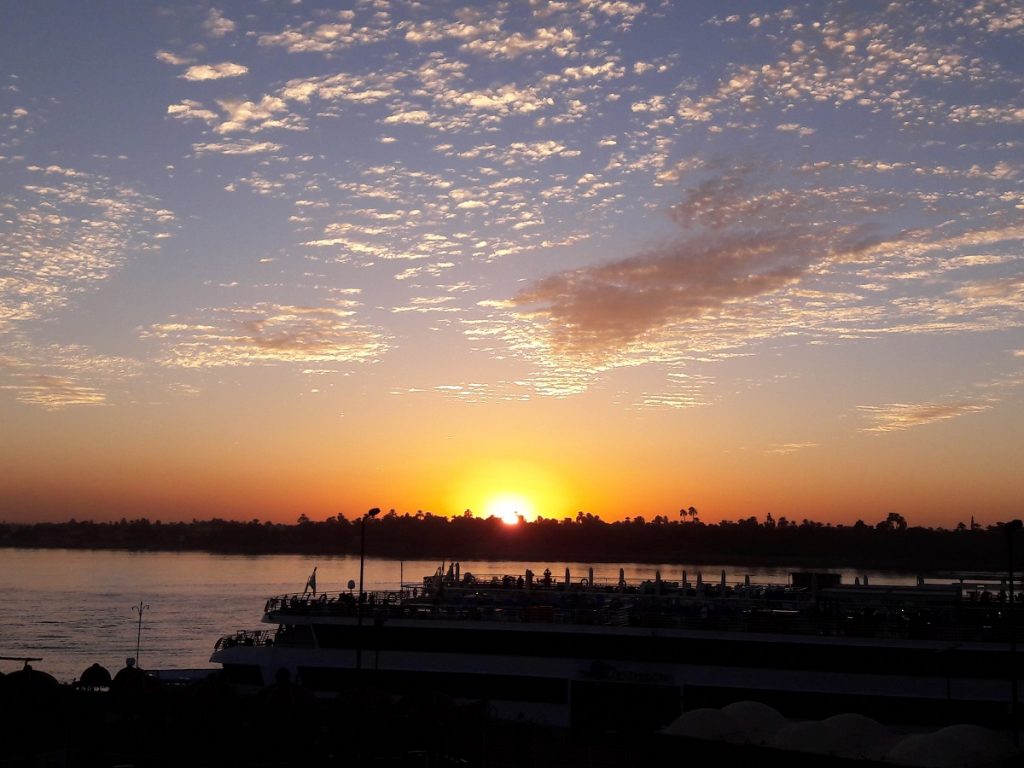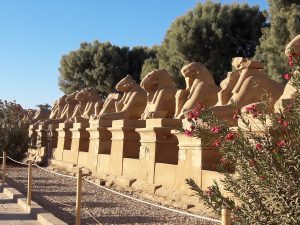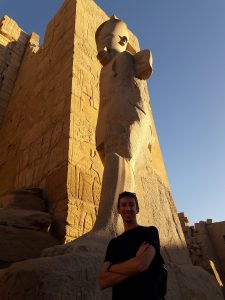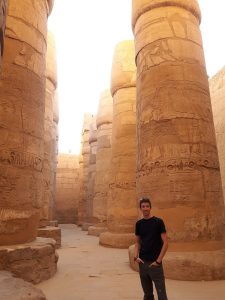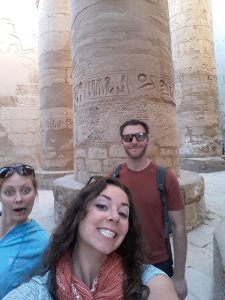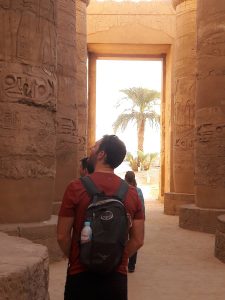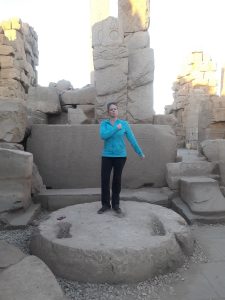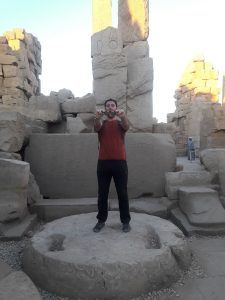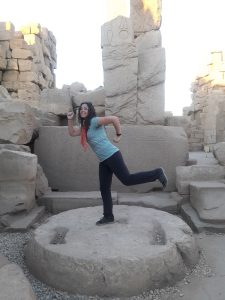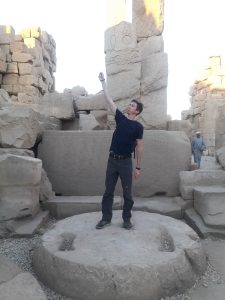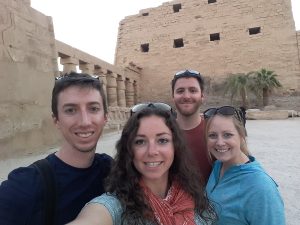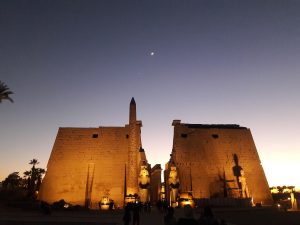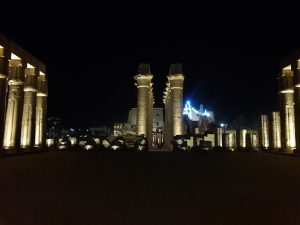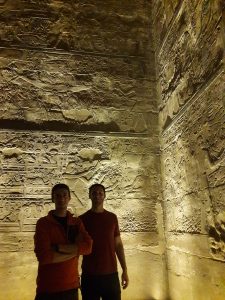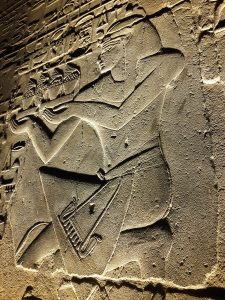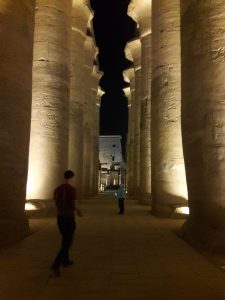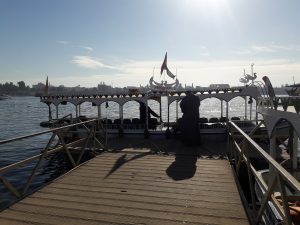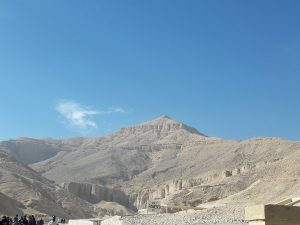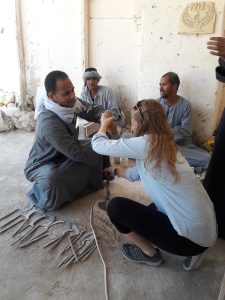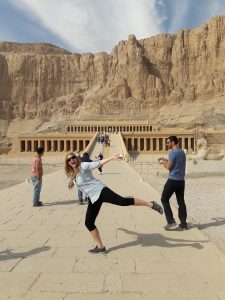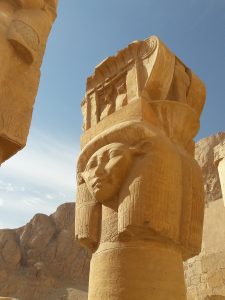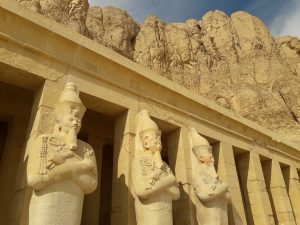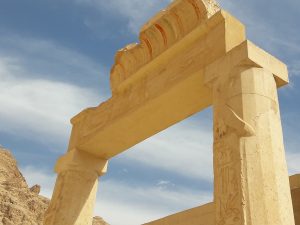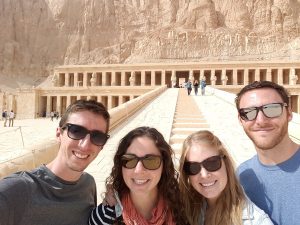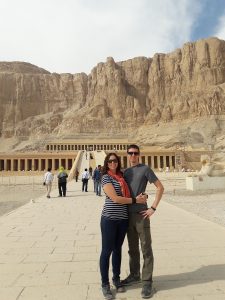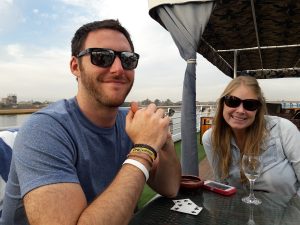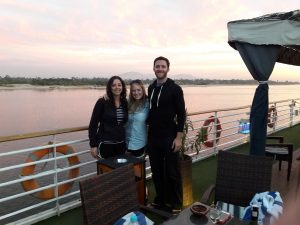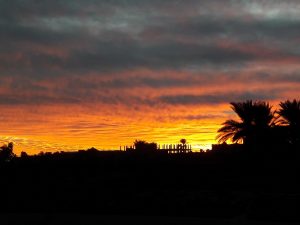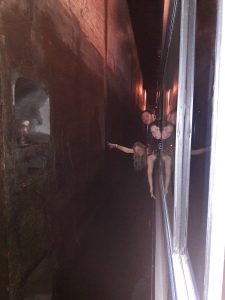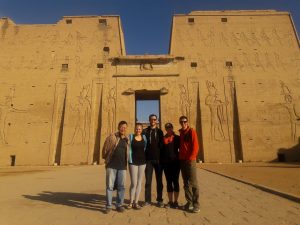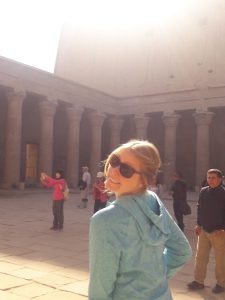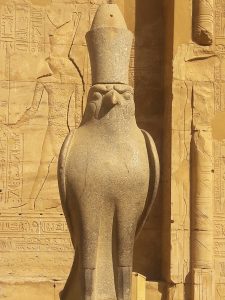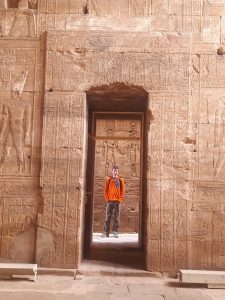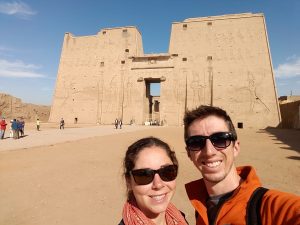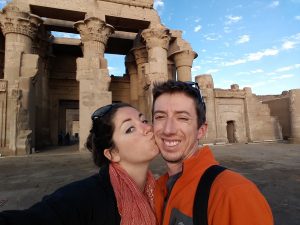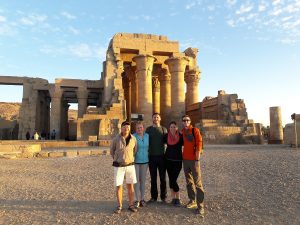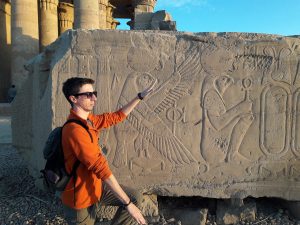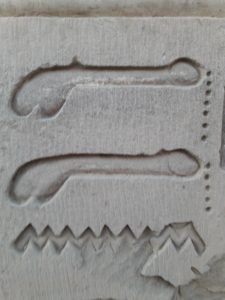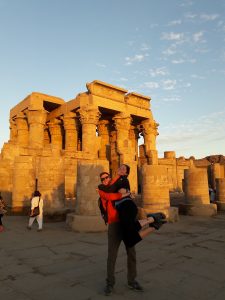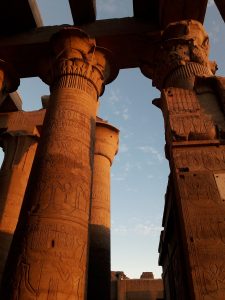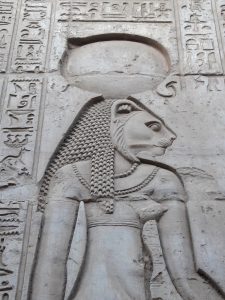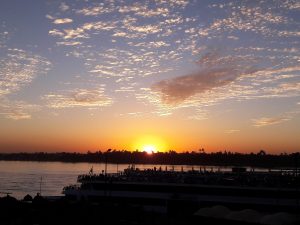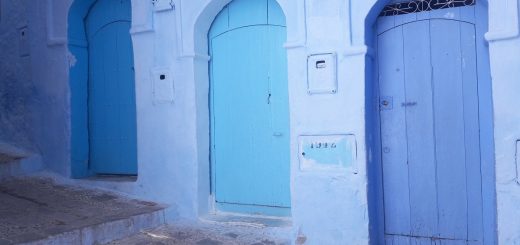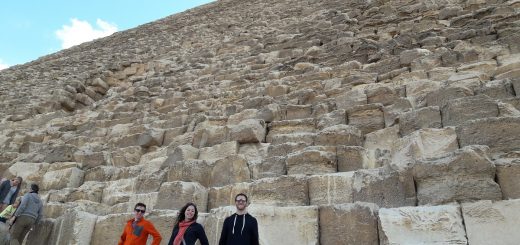Walk Like an Egyptian – Edfu, Luxor, and the Valley of the Kings
We said a temporary good-bye to Cairo, ready to begin our riverboat cruise up the Nile River. This post covers some of my favorite parts of our tour including Aswan, Edfu, Luxor, and the Valley of the Kings. Hope you enjoy as much as we did!
What We Did
Day 134 (12/3/16): We began our day with a short flight from Cairo to Luxor. Once there, we were taken to our cruise ship for our four-day journey down the Nile. After a quick lunch, we met our guide, Sayed and new friend and tour mate Winston Wee, and headed for the largest temple in the world, and home to two thirds of the world’s ancient monuments: Karnak Temple. We spent a couple hours touring its open air offering complex, shrines to the holy trinity, massive hall of behemoth columns, ancient obelisks, sacred lake, and endless wall carvings and hieroglyphics. After leaving Karnak around sunset, we headed for Luxor Temple. We saw the great sphinx-lined roadway stretching between Karnak and Luxor Temple. We also explored the open-air court, columned halls, and sanctuary of the temple, where Alexander the Great, so enamored with the Egyptian people, remodeled the sanctuary carving his own image and cartouches into the walls in the way of the ancient pharaohs. Afterwards, we returned to Karnak for the sound and light show, before reboarding the boat to sleep.
Day 135 (12/4/16): We met our guide early and headed out by boat across the Nile to visit the West Bank. Our first stop was the Collossi of Memnon, two enormous statues of Pharaoh Amenhotep that guarded the entrance of what was the second largest temple in Egypt. Then temple was pretty much entirely destroyed during an ancient earthquake, so the stop was mainly to take pictures of and marvel at the size of these two mammoth statues. From here we headed to the Valley of the Kings, famous burial site of over 65 pharaohs, high priests, and nobles, including the King Tut and Ramses II. We toured three of the tombs and were floored by the incredibly vibrant painted colors in them, still incredibly well preserved after over 3000 years. Afterwards, we stopped at an alabaster workshop, where Egyptian craftsmen still cut, chisel, and sculpt pots and figures by hand. We learned how the process worked and got a chance to see all of their incredible work. Our last guided stop of the day was at the temple of Queen Hatshepsut. She was the only queen who ruled Egypt, and she did so for almost 20 years, taking the throne from her step-son when he was a young boy using a made-up birth story about the god of the sun and the influence of a powerful high priest. She built an enormous three-tier funeral temple for herself into the mountainside of the West Bank. We learned about her rule (and her step-son’s revenge on her temple after her death) and spent some time getting pictures before hopping in the van and heading back to the boat. We had lunch aboard and then headed to the upper deck where we played euchre, drank wine, and watched the sunset as we sailed along the Nile. The evening concluded with a trip through a large loch on the river, dinner, and a private dance party/happy hour in the lounge.
Day 136 (12/5/16): Overnight we sailed and by morning had arrived in Edfu City, a small town on the outskirts of Aswan. We ate breakfast and departed the boat, taking a horse drawn carriage to Edfu Temple, the most complete, intact temple in Egypt and second largest one still standing. We explored its stone gates, massive columns, beautiful carvings and hieroglyphics, ancient statues, and fascinating history. Afterwards, we returned via carriage to the boat to sail for Kom Ombo City. We ate lunch, relaxed, Katie and I enjoying some sun and swimming on the top deck. At 4:00, we met with our guide Sayed, once again for a trip to the Kom Ombo Temple. We explored the temple, learned its history, and took some amazing pictures in the dwindling sunlight. We learned saw some interesting things, including an ancient calendar, and carvings of Cleopatra, a birthing chair, and an explanation of male fertility issues complete with phallic symbols. After watching sunset, we breezed through the mummified crocodile museum and reboarded the boat. We played some more euchre (the girls dominated) and anxiously awaited dinner. Afterwards, we relaxed and watched some movies before falling asleep.
What We Learned
- Luxor is clean and green. Cairo is dirty. The difference in cleanliness and trash removal in these two cities is night and day. It was a bit off-putting in Cairo to see the amount of trash covering most every surface of the city. I have never before seen a place where even the highways had mounds of trash piled up along the sides of it. It was not uncommon to see animals eating out of dumpsters or piles of garbage (including horses and donkeys). Our guide Waleed explained that some of the primary drivers were the political climate of the country causing a lessened priority of policies for cleanliness in urban centers and intense overcrowding in the city of Cairo. This has also led to issues with traffic, and you will see this if you spend time there. On the other hand, Luxor is a beautifully lush green, and clean city. There is not trash strewn about on the roads or in the fields, and the city is largely an agricultural center, specializing in bananas, sugar cane, and dates. There are also tons of wild flowers lining some of the country roads in white, red, orange, yellow, purple, and every shade of pink you can imagine. I spent a lot of time marveling at them as we travelled between the main sights. Both cities are worth visiting and chalk full of interesting and impactful historical sites. However, I felt it prudent to let you know what to expect. The other cities I visited in Egypt seemed to fall somewhere in the middle of the spectrum, but definitely closer to the Luxor side than the Cairo side.
- You will see a ton of unfinished houses in Egypt. We asked our guide about this phenomenon. He explained that in Egypt, only about 7% of the land area is desirable for living, given that the rest is desert or very barren and devoid of water. Therefore, most houses average around five stories tall. A couple will get a permit to build a five-story house and will pay to finish maybe one or two floors of it. Then, when their children grow up and need somewhere to live, they may finish more of the floors. This allows the children to be close and to aid in caring for their parents. He also indicated that for a certain extended period of time, while the house remains unfinished, the owners do not have to pay taxes on it. This is why you may also see fairly complete multi-story homes with just one small section above left undone.
- All over Egypt, at the historical sites, they offer a “sound and light show”. We attended the one at Karnak. It cost $30 per person via our tour company. While it was really cool to see the temple lit up at night and to hear the history of Egypt and which pharaoh did what at the temple, we found it to be a mediocre experience. The entire show is a bit outdated and I would have expected something a bit grander given the backdrop. Also, while I liked that part of it was a walk through the temple, the bit is the hall of columns was difficult to hear and the sound quality was not the best. Our tour mate, Winston, told us he did the one at the pyramids and that it was similar. So, bottom line, my recommendation is that this can be missed. Save your money for a different excursion or souvenir and spend more time at Luxor Temple.
Memorable Moments
- Seeing Luxor Temple was an astounding moment. I especially enjoyed seeing it all lit up at night. We got there just after sunset and got some great pictures. Sitting in the open-air courtyard for offerings flanked in three sides by closed Lotus flower columns, with a crescent moon hanging over head was breathtaking. It is definitely one of the most inspirational places I have seen. And I know I keep saying stuff like that in these posts, but the more I travel and the more I experience, the more I am continuously floored by the beauty and wonder of some of these places.
- One of our first nights in the boat, they were having a welcome Happy Hour, complete with complementary cocktails. After splitting two bottles of wine, we decided to check it out. We downed some more drinks and danced on the small floor (just Katie and I at first). The boat was mostly empty, and when the one other small group in there left, the staff asked if we wanted to turn on our own music. So, we plugged in my phone, all of us gathered on the dance floor, and we jumped around to the theme-song of our trip, “Nights” by Avicii. It was a blast!
Pictures

